I've been collecting cameras for half a century now, but a few years ago decided it was time to finally take them off the shelves and start actually using them.
In January 2010, I decided to use a different film camera every week, aiming to get through 52 in the year. Well, things got a little out of hand and the project – which you can follow on my Flickr page – ended up lasting a decade. I never missed a week, which means I've now used 522 different cameras.
Many of my cameras are fairly common or cheap, including the likes of Olympus Trips and Box Brownies. But I've picked up a lot of oddities along the way too, and the ones below are a selection of the more unusual ones in my collection. Hailing from all over the world, these cameras are a cross-section of the huge variety you could find in the earlier days of film (and still can, if you're prepared to hunt around).
As well as an interest in old cameras, I have a degree in Fine Art, and like to think that the creative element of the project is as important as its technical aspects. Of course, it's now several years since consumer digital cameras have out-performed film cameras in terms of technical quality.
But this has freed film cameras to be used for the sheer joy of tinkering with analogue devices, and in creative ways where a perfect image is no longer an important criterion for success. So here, in no particular order, are the 12 most gloriously strange cameras I own.
The 12 strangest cameras I own:
The 16-lens wonder: Kalimar Actionshot (1995)
- Bought on eBay for £80 (around $111 / AU$151) in 2009
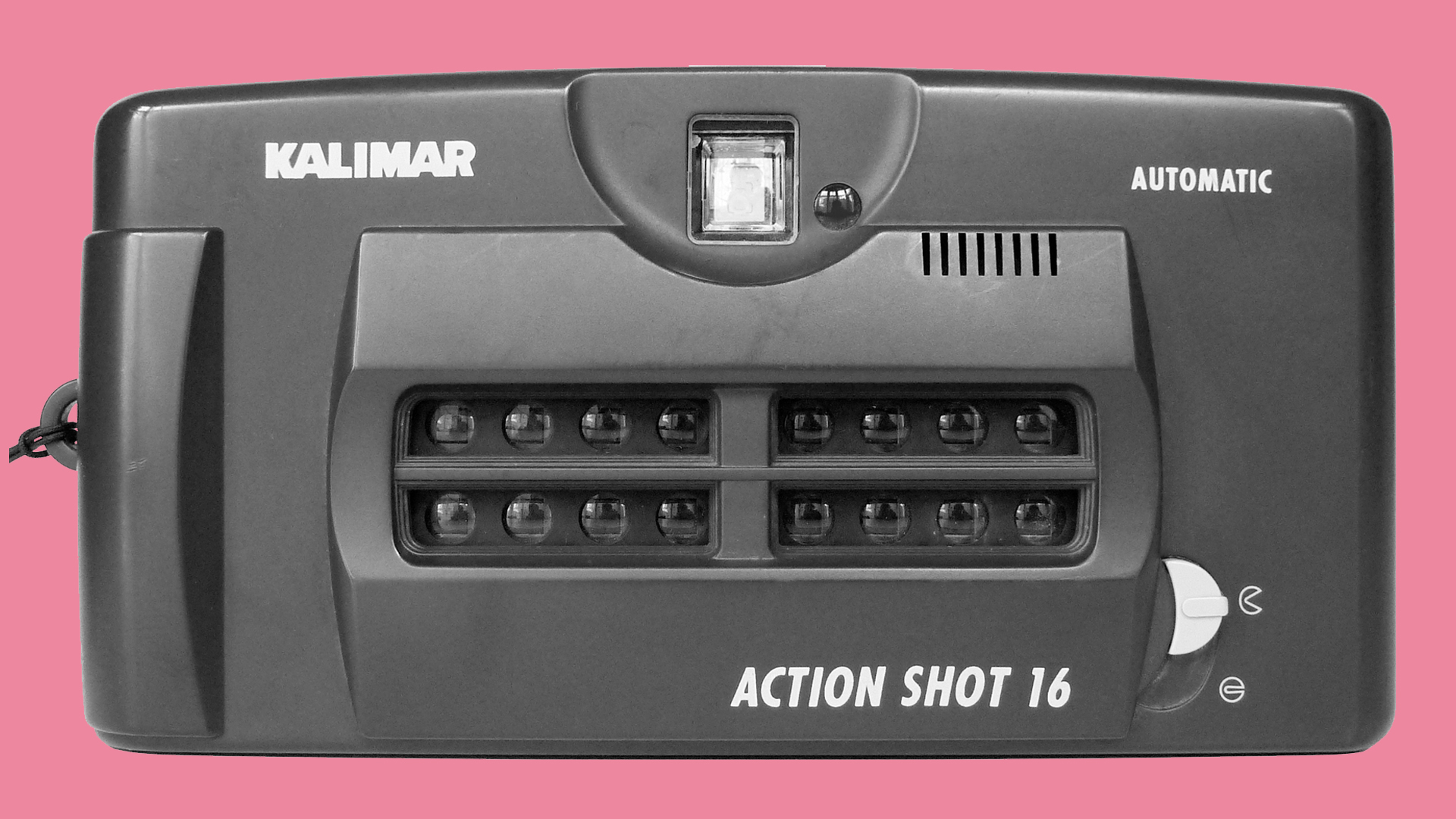
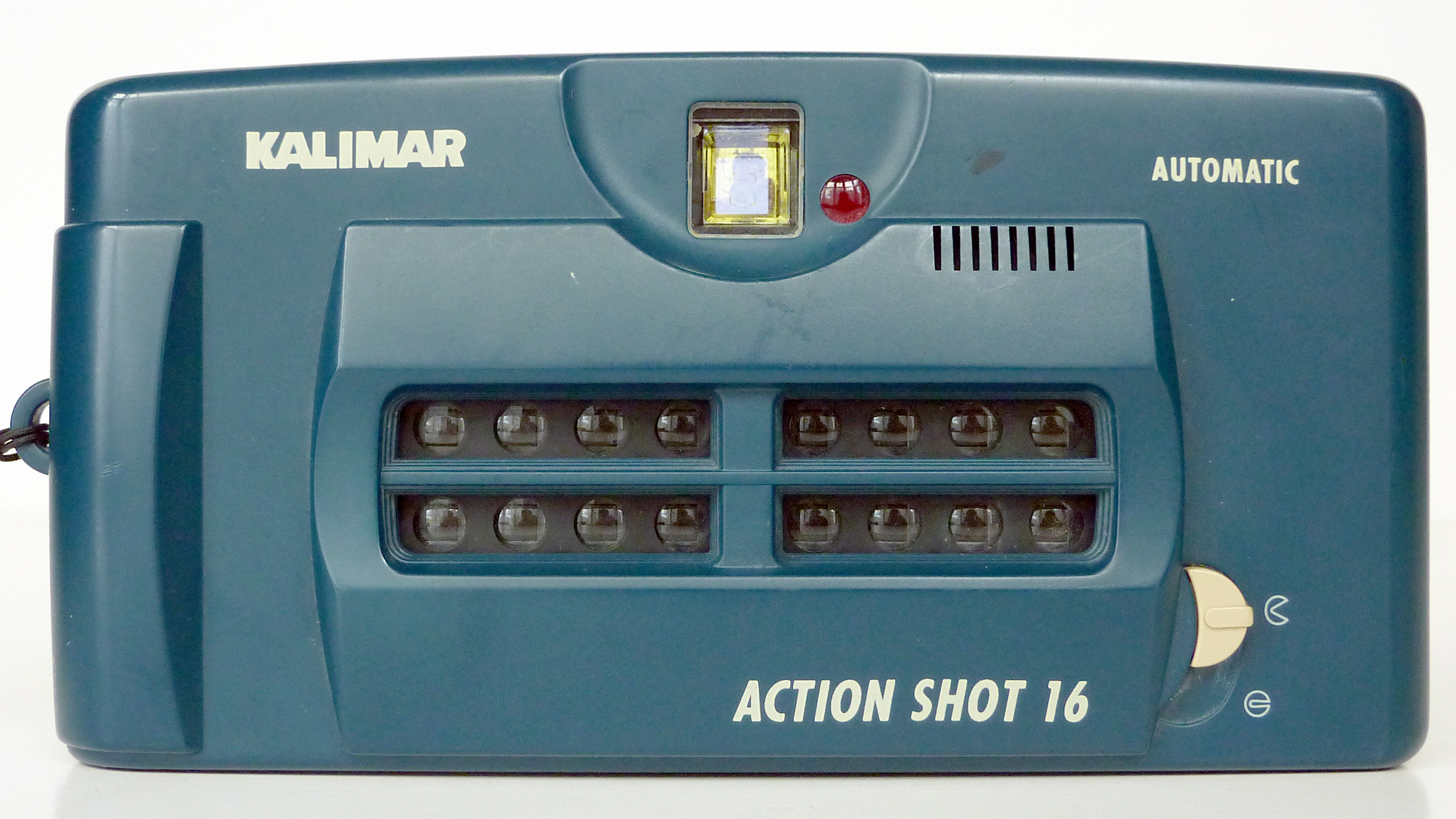
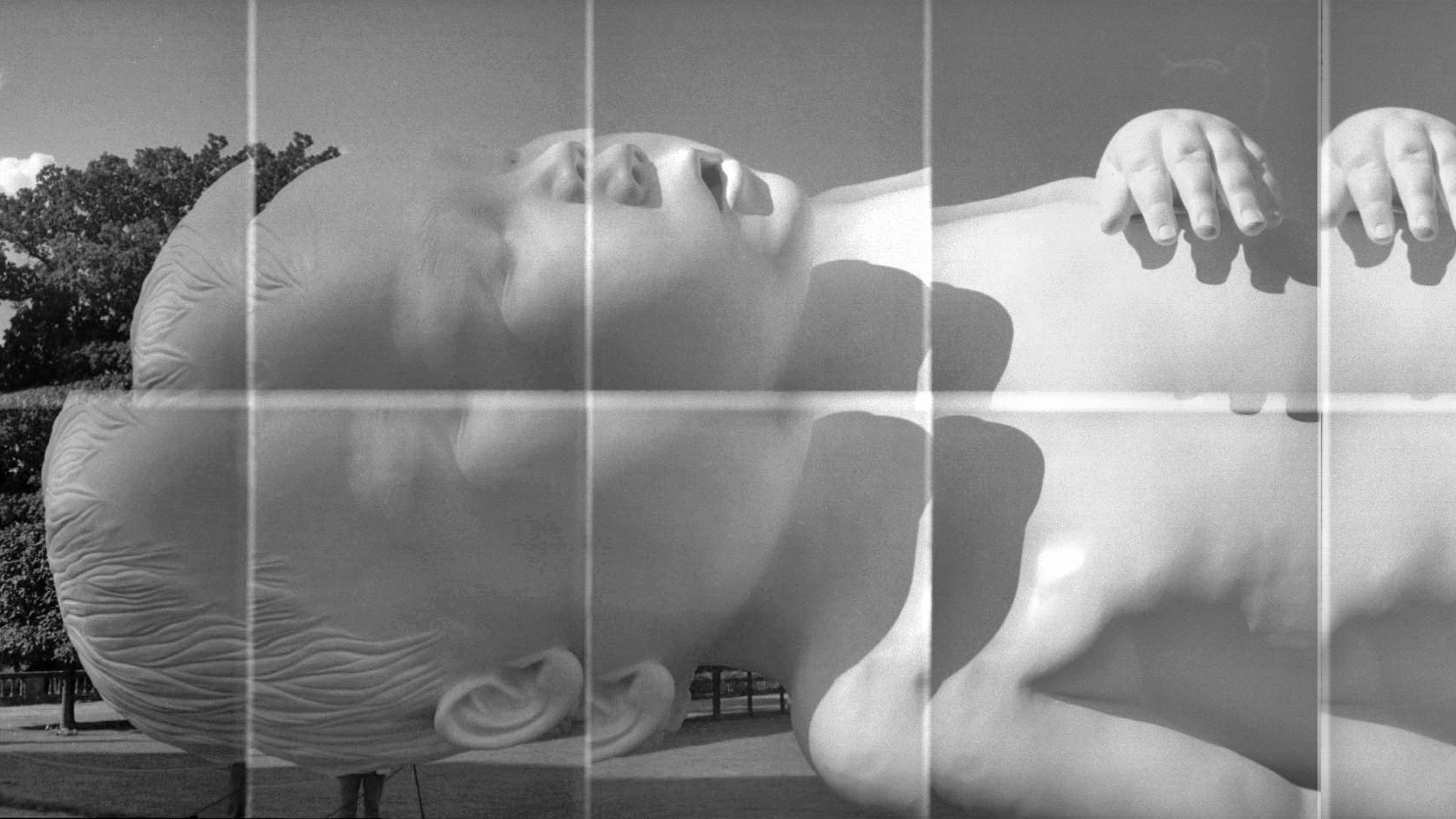
Cast your mind back five years and you might remember a bizarre digital camera with 16 lenses, called the Lytro L16. Well, the Kalimar Action Shot is a similar concept from an entirely different era. It's one of those rare cameras that I previously hadn't heard of, but as soon as I became aware of its existence I knew I had to have one.
Hitting the market just before video cameras started to get affordable, this gadget was marketed at golfers to help them analyze their swing. It has 16 lenses, arranged to cover two full frames on a 35mm film. The shutters are fired in rapid sequence, and the resulting prints show the progress of the golfer's arm and club.
The appeal to me was not so much the rapid sequences, but the fact that the camera also has a setting allowing the shutters to be fired one at a time, as close or as far apart as you want. This opens up possibilities of creating a mini narrative series or making in-camera 'joiner' photos like the one above of Marc Quinn's giant baby.
The original selfie machine: Minolta 7 Disc (1983)
- Bought for a few pounds in a car boot sale in the 1990s
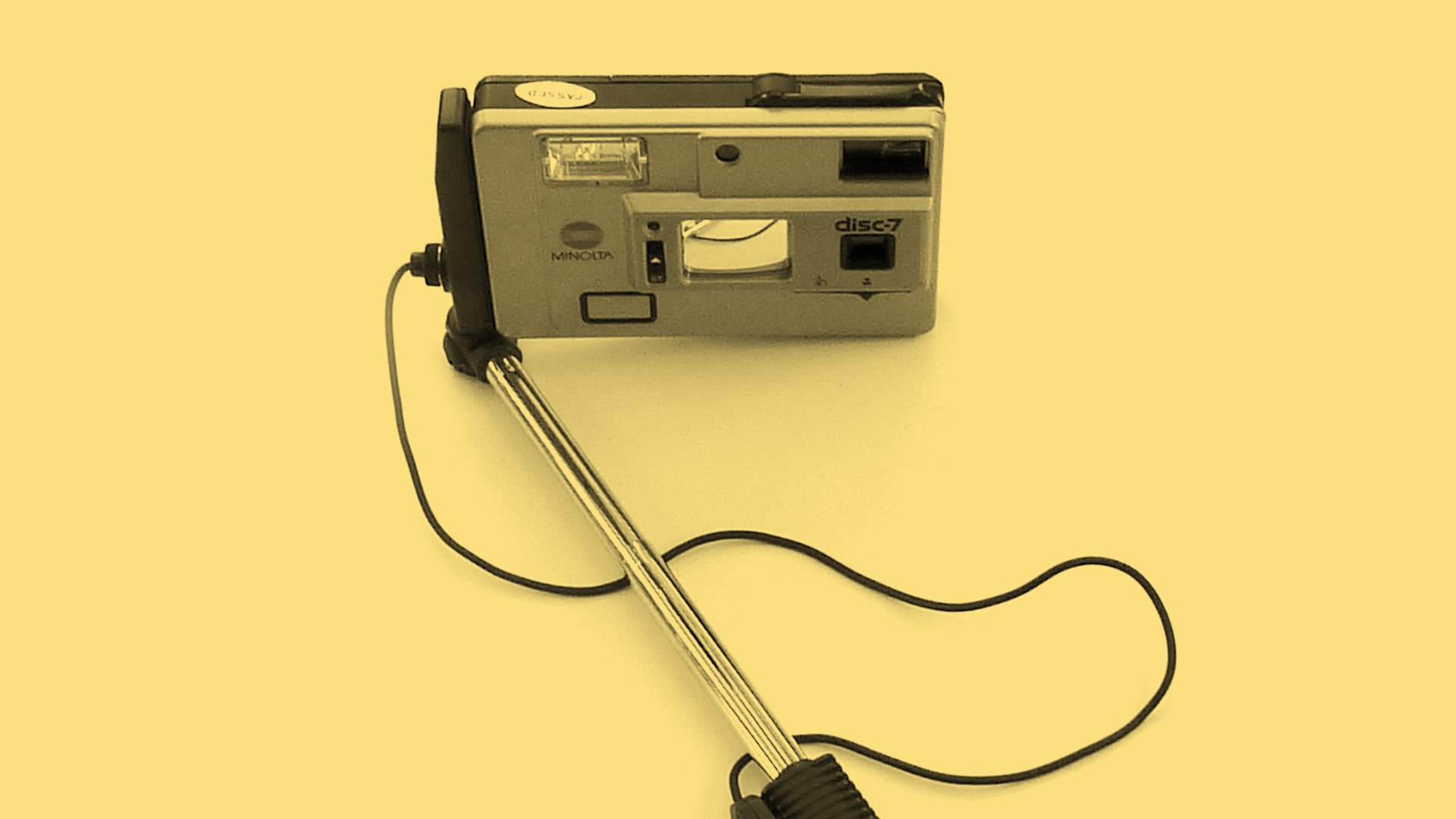
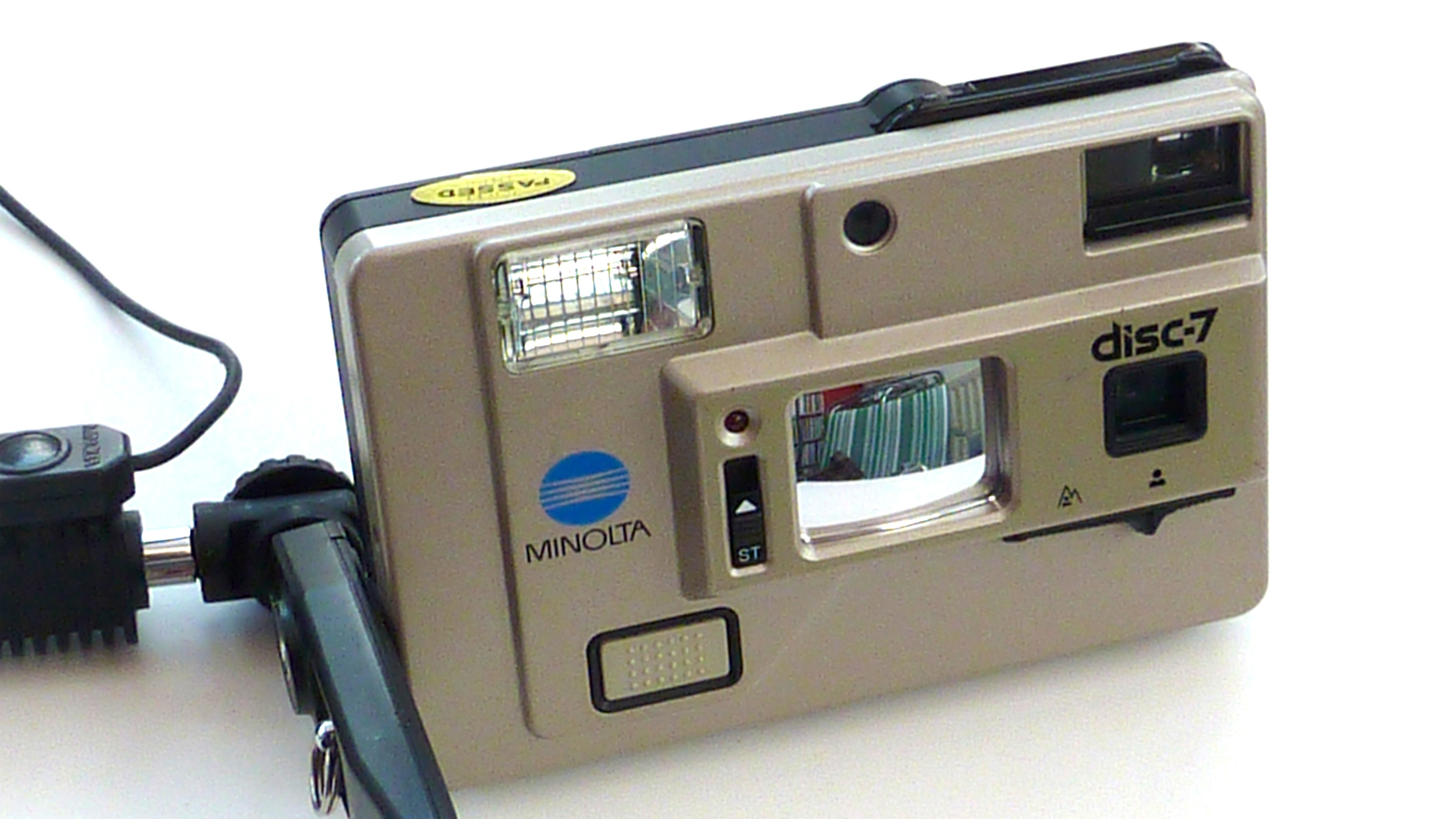

The selfie camera has been standard on smartphones for years now, but this camera was way ahead of its time when it landed in 1983. It uses the now-obsolete disc film format, and is in most respects just like the hundreds of little disc cameras that were around at the time.
What sets the Minolta 7 Disc apart from the rest, though, is its built-in telescopic wand (as Minolta called it), which we'd now call a selfie stick. This allows the camera to be held at arm's length while you pose yourself with the aid of a convex mirror, which is part of the camera.
The camera's shutter release is in the handle, and a motor-drive advances the film to the next frame if you want to take more than one snap. The main disadvantage with disc cameras is that the film was last made in 1999, and the dwindling supply is ever more expired. Couple that with the fact that the battery is not replaceable, and this becomes more a collector's curiosity than a usable camera, although I did take a few selfies with it during lockdown.
Double trouble: View-Master Stereo (1962)
- Bought for £60 (around $83 / AU$113) on eBay in 2010
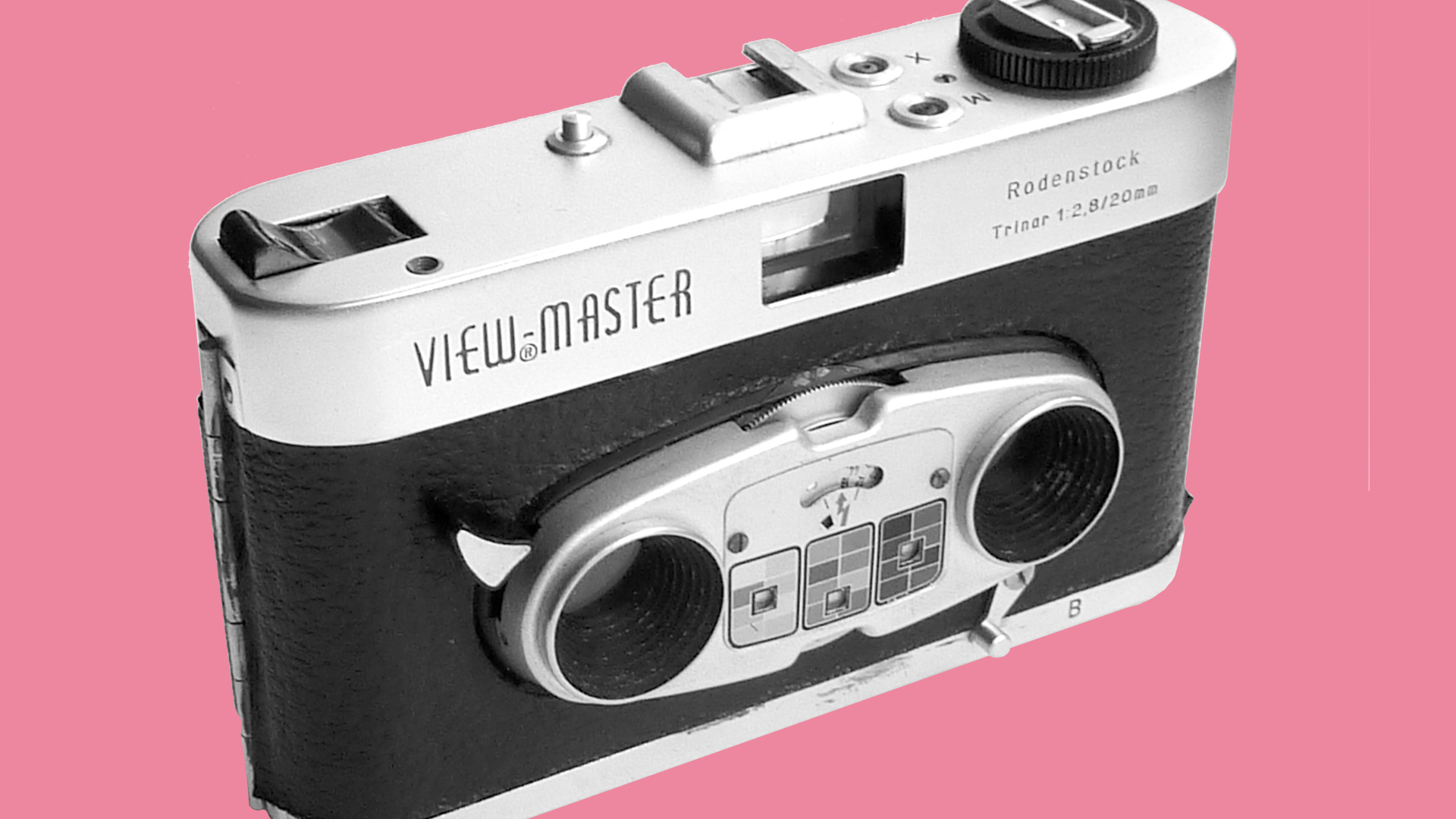
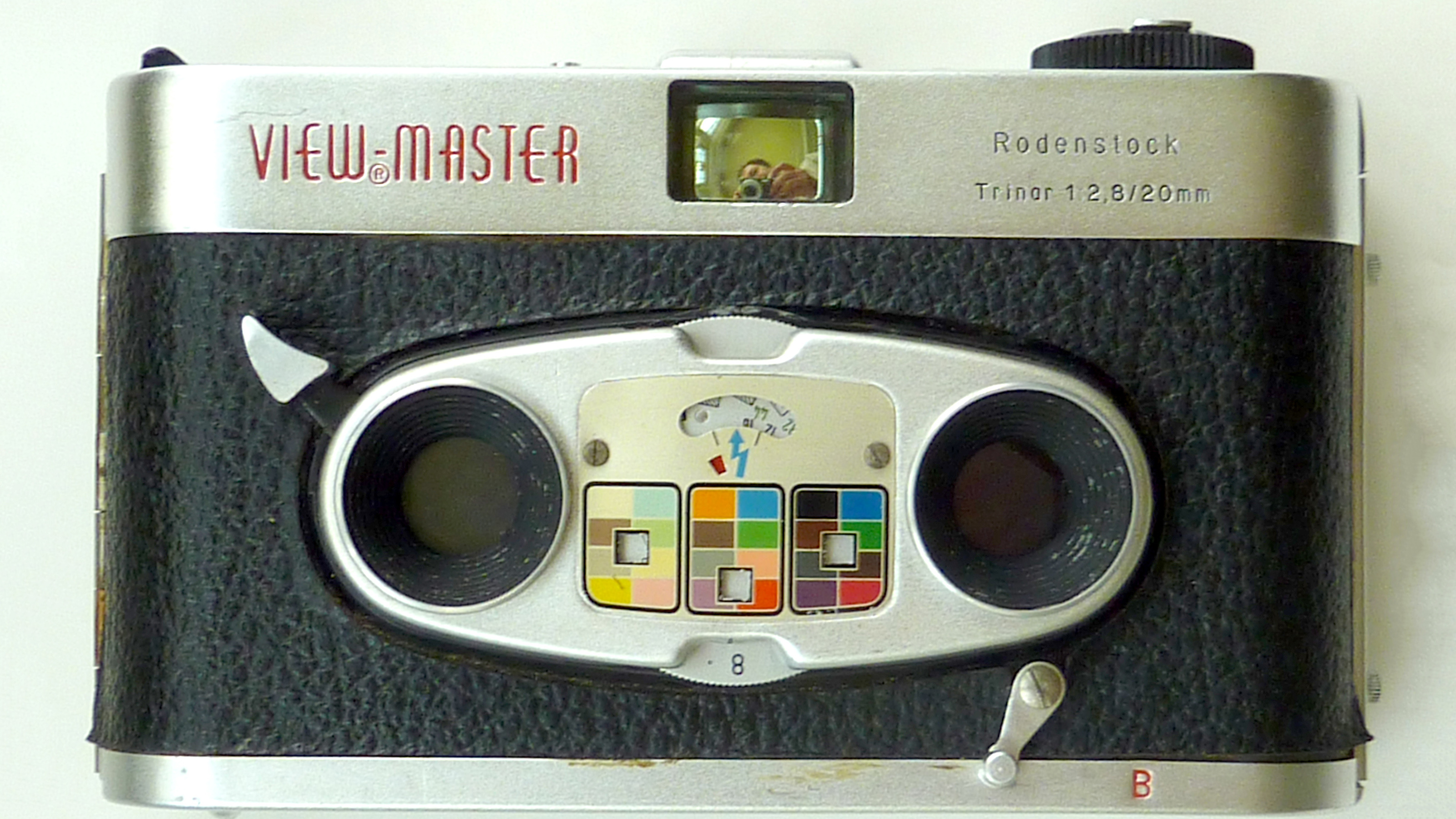
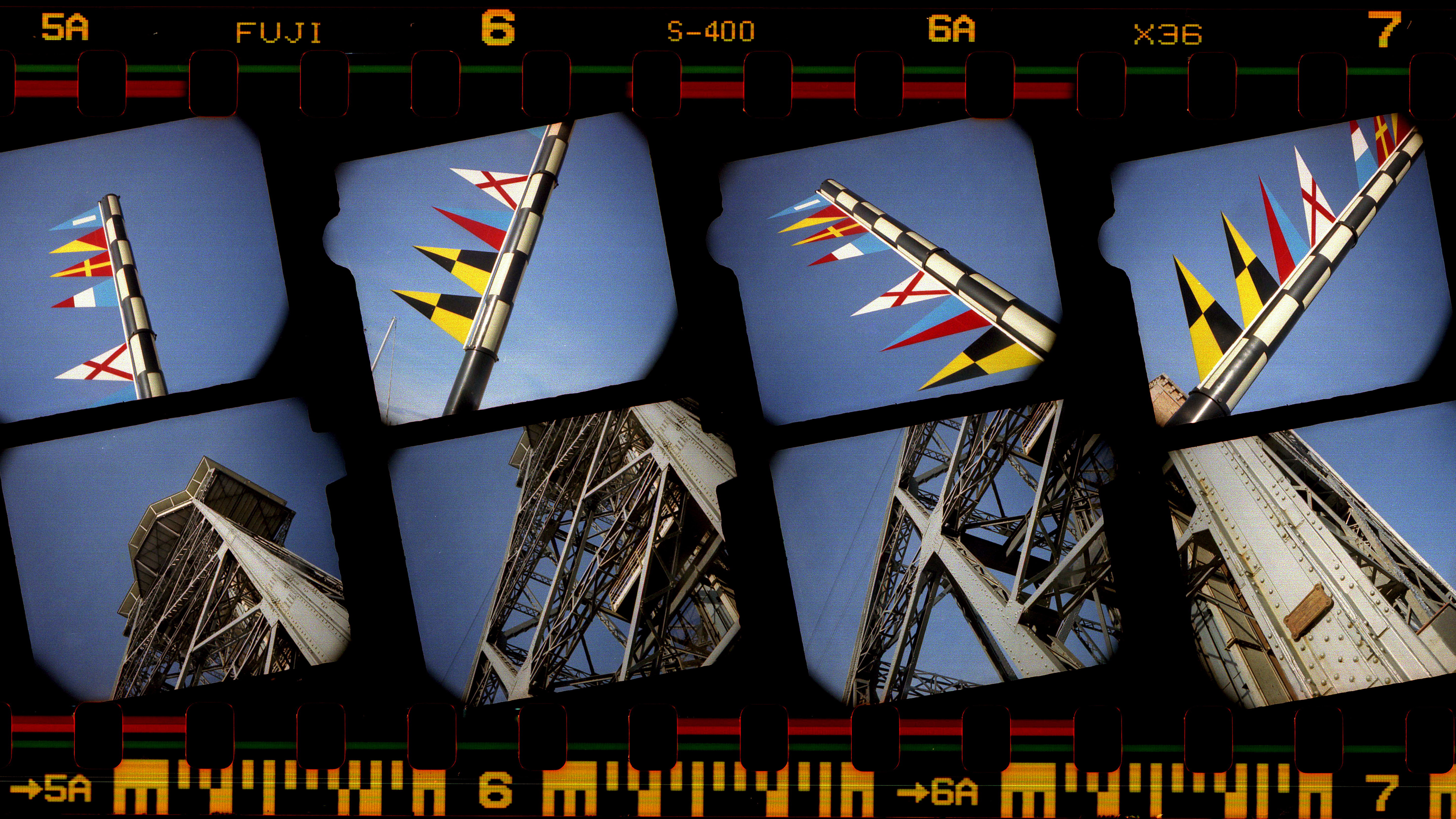
Remember the View-Master? Like a 1950s precursor to Google Cardboard, these binocular-like devices created the illusion of 3D depth thanks to their little discs containing stereo pairs of photos. What fewer people realize is that there were also a number of cameras made for enthusiastic amateurs to take their own View-Master stereo photos, and I have one of these.
First introduced at the New York World's Fair in 1939, there was a wealth of content made for View-Masters, everything from wildlife to comedy cartoons and risqué pin-ups. But the camera I have is the Mark II version, made in 1962. As ever, I was as taken by the camera's quirks and possibilities as much as by its functionality.
The film takes a diagonal path across the camera, and this allows an amazing 75 stereo pairs, or 150 'chips' as the manufacturer described them, to be made out of a 36 exposure film. I sometimes like to extend my compositions beyond the frame of the negative, and the staggered, angled images, edged by the film's sprocket holes and bar-codes, can work well given a suitable subject.
The airport nightmare: Zenit Fotosniper (1982)
- Bought for £40 (around $55 / AU$76) on eBay in 2010
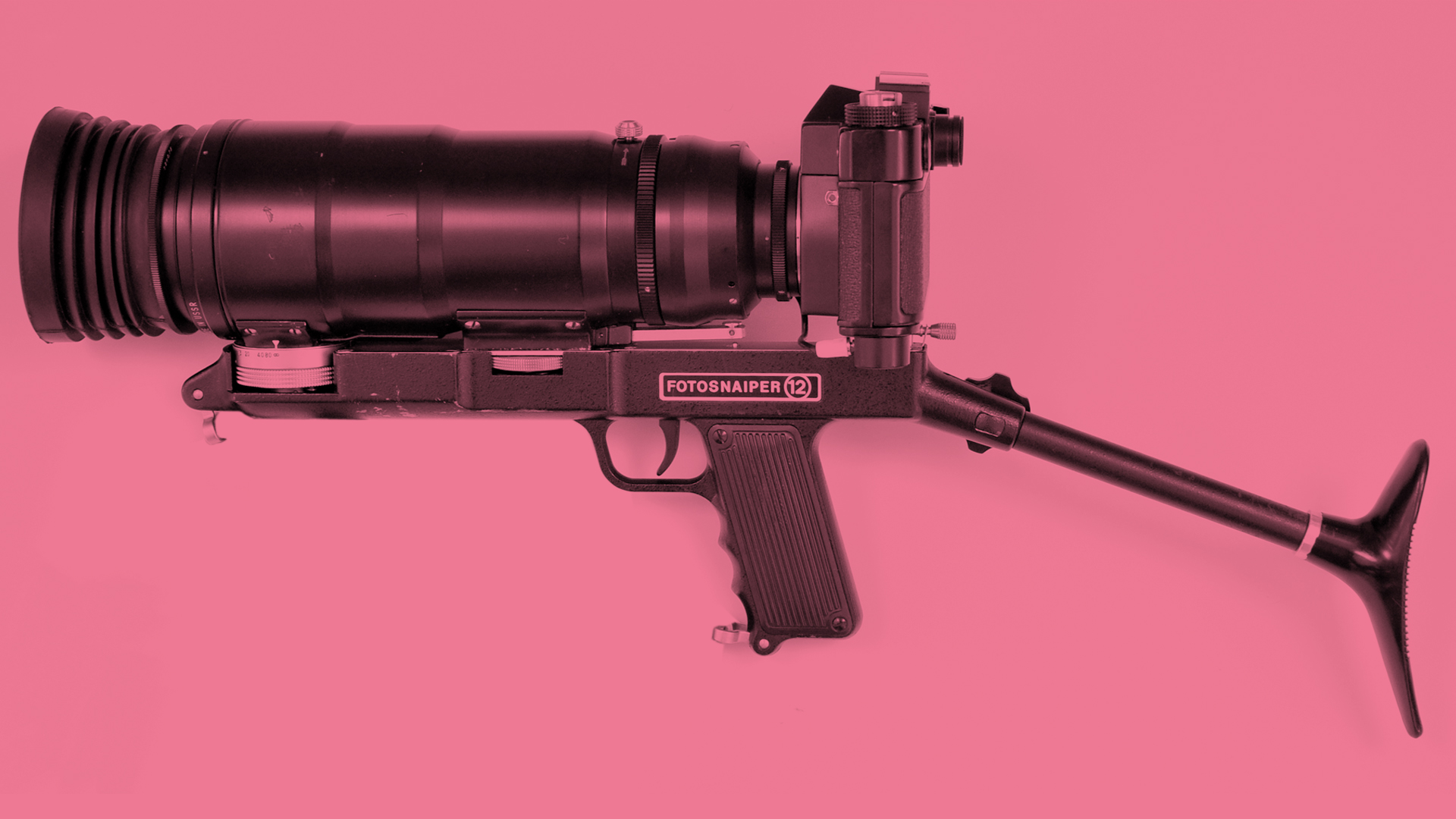
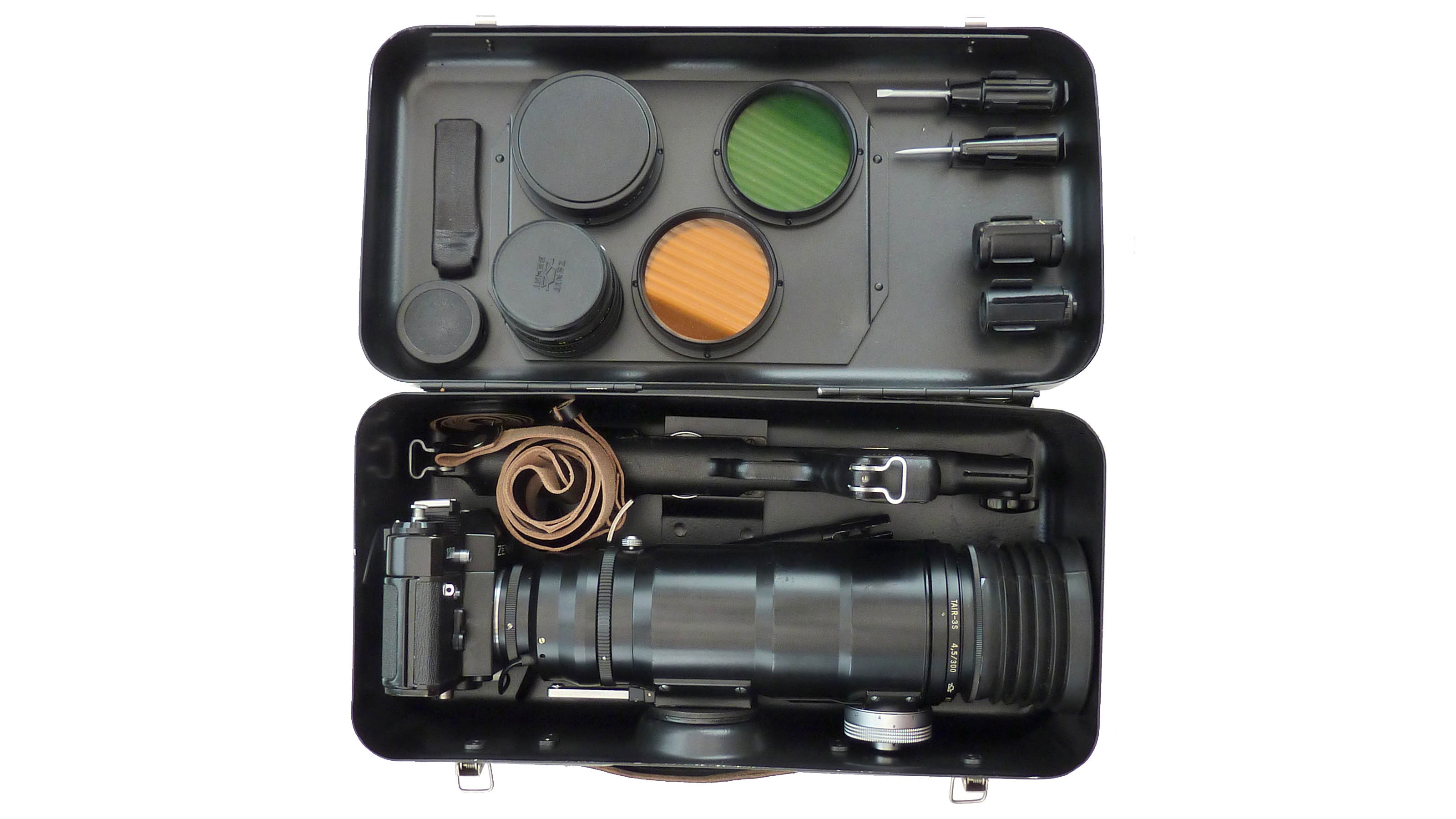
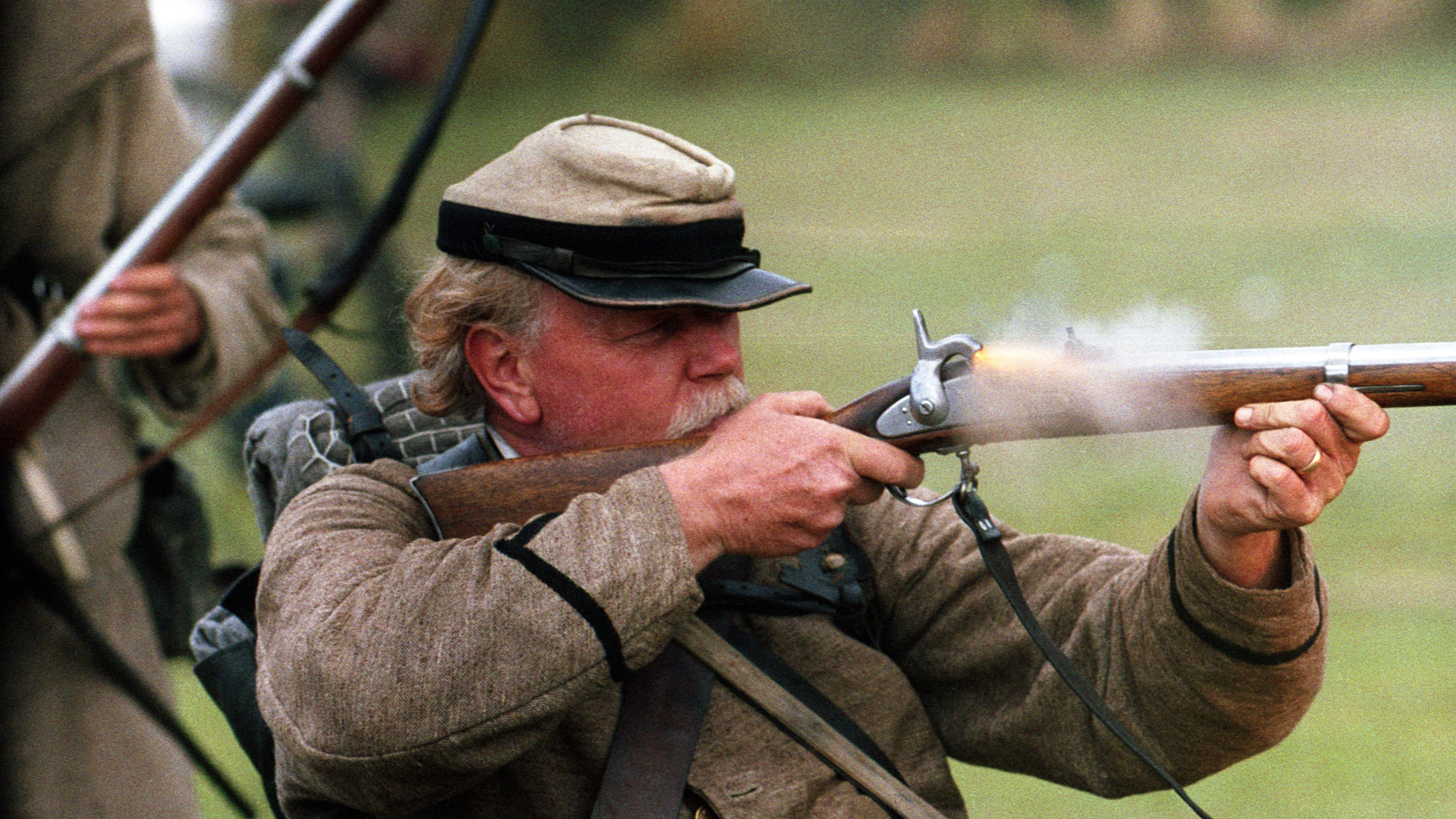
This piece of Soviet-era kit comes in a distinctly military-looking metal case, weighing in at over 5kg. As the name suggests, this Zenit is made for snipers, but the intended target is sportspeople or wildlife, rather than enemy combatants.
The camera is a modified Zenit B with a 300mm lens. At first glance it's an alarming sight, and it was a challenge to use it without frightening passers-by or getting arrested on suspicion of carrying a shoulder-mounted, rocket-propelled grenade launcher.
I generally like to blend in and avoid drawing attention to myself, so I took it to a historical re-enactment where guns and lenses of all sizes were toted, and no-one batted an eyelid. I found myself a discreet spot and as I carefully assembled my photographic weapon, I couldn't help thinking of the climactic scene from the film “The Day of The Jackal”, in which Edward Fox puts together his sniping rifle ready to take a pop at the French president.
The American beauty: Mercury II (1945)
- Bought for £30 (around $42 / AU$57) on eBay in 2011
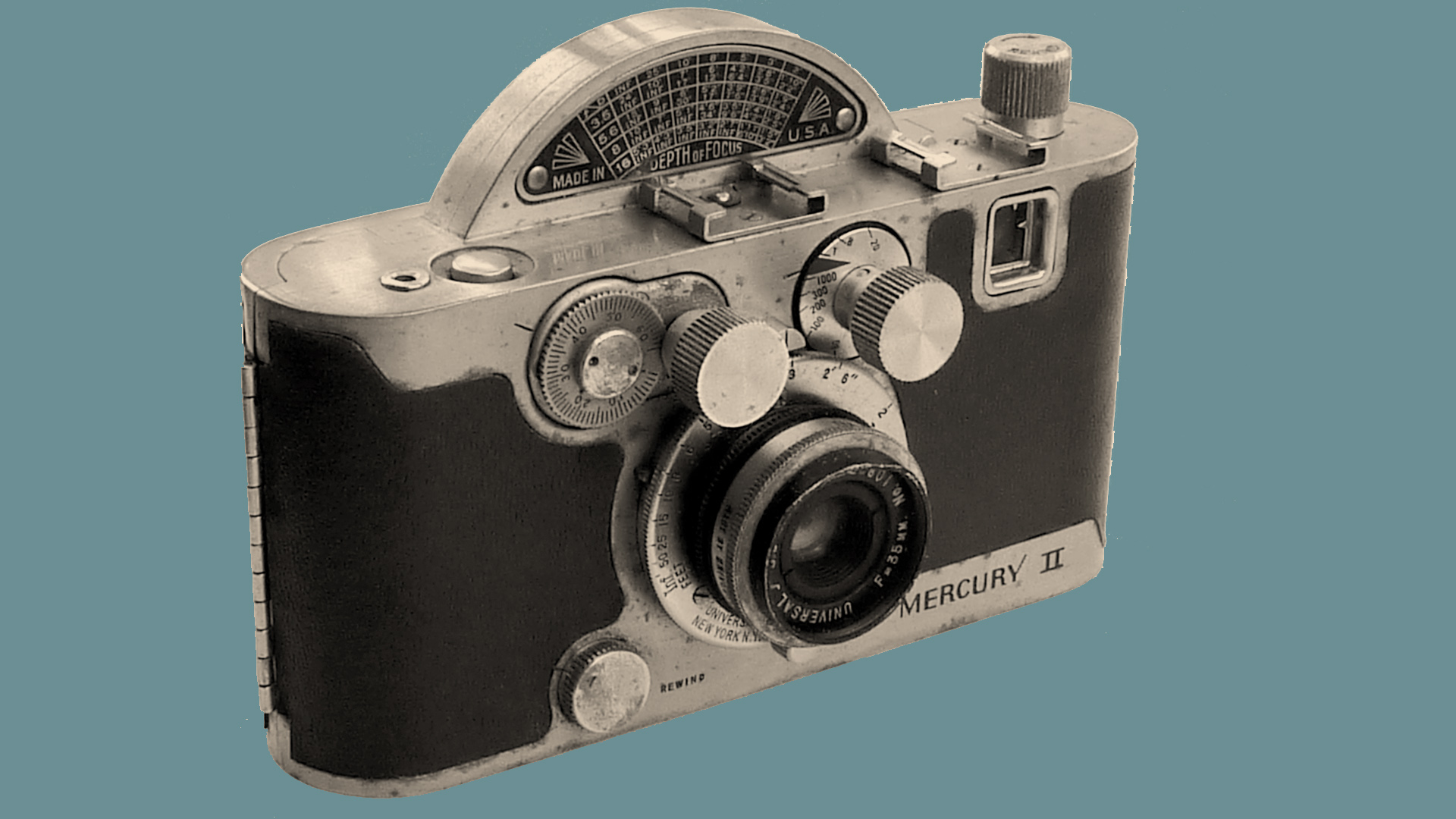
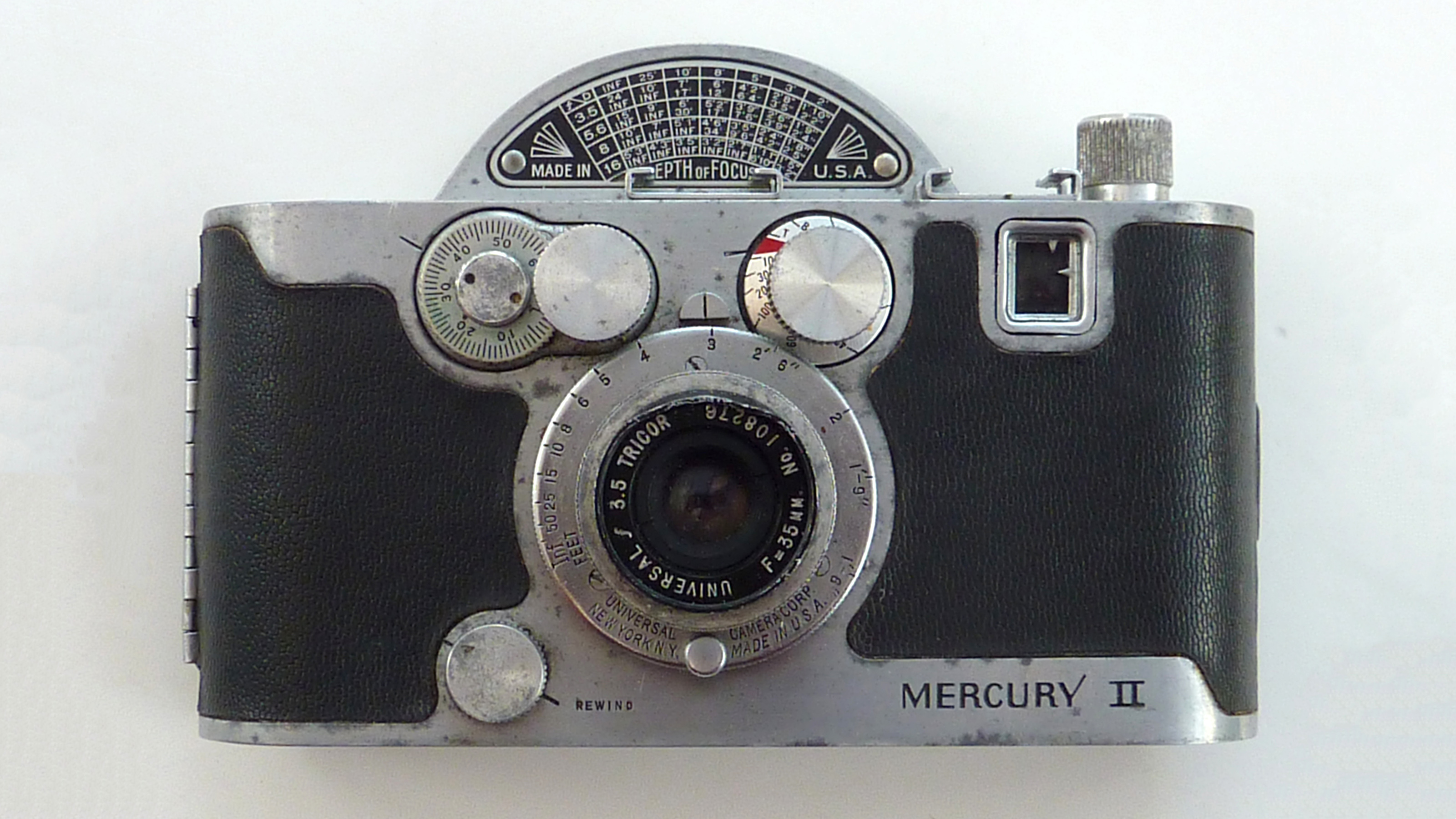
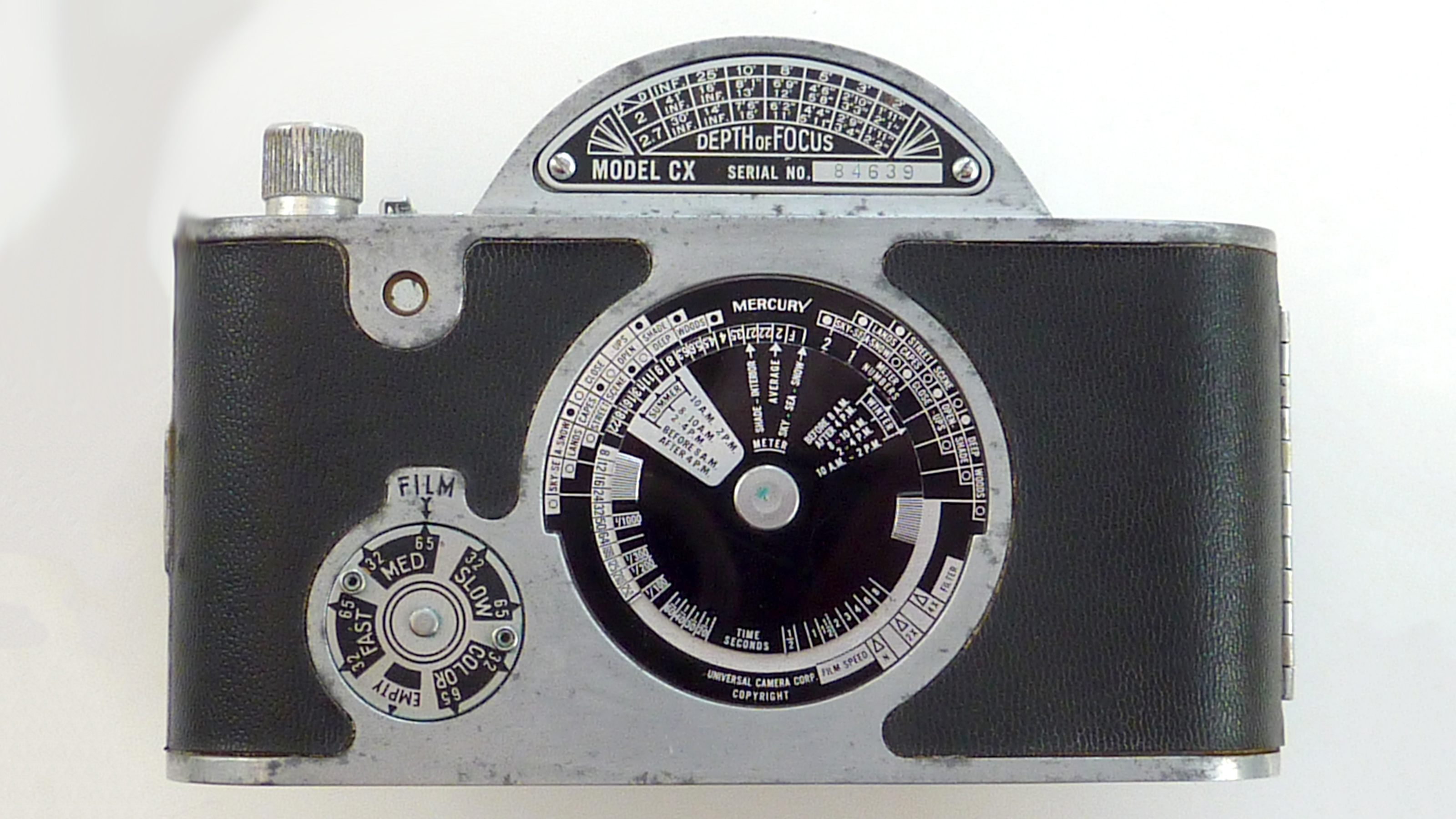
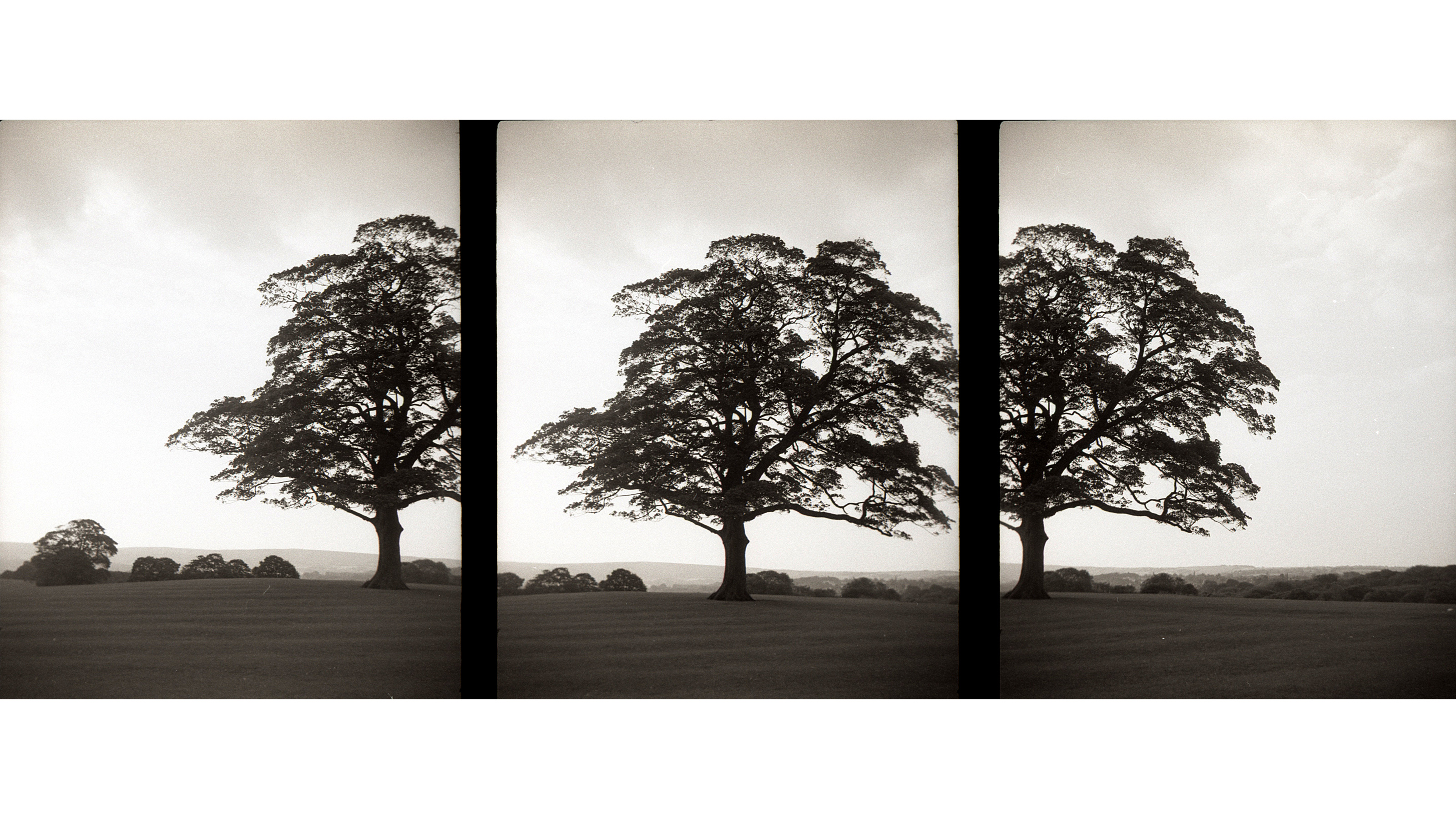
Made in New York and dating from 1945, the Mercury is a peculiar-looking beast. With its domed top and wealth of dials and curved scales, at first glance it could mistaken for an old-fashioned parking meter rather than a camera. But that semi-circle on the top was innovative for its time – it contains the focal plane shutter, which takes the form of a rotating disc with a variable width slit in it.
The Mercury II's body is made from cast aluminum, so feels solid and robust without being isn't too heavy. With its myriad dials and scales, it's certainly not for the easily daunted or numerically challenged – I counted no less than 167 numbers spread out among them. Among other things there is comprehensive information about depth of field, and an exposure calculator to work out the settings for most conceivable light conditions.
If you were to make full use of all this information, anything but the most static of subjects would have long gone by the time you were ready to shoot. Still, it's a half-frame camera, so with 72 exposures on a roll I was quite happy to use it to make panoramic sequences encompassing several frames.
Bond's binoculars: Tasco 7900 Bino/Cam (1977)
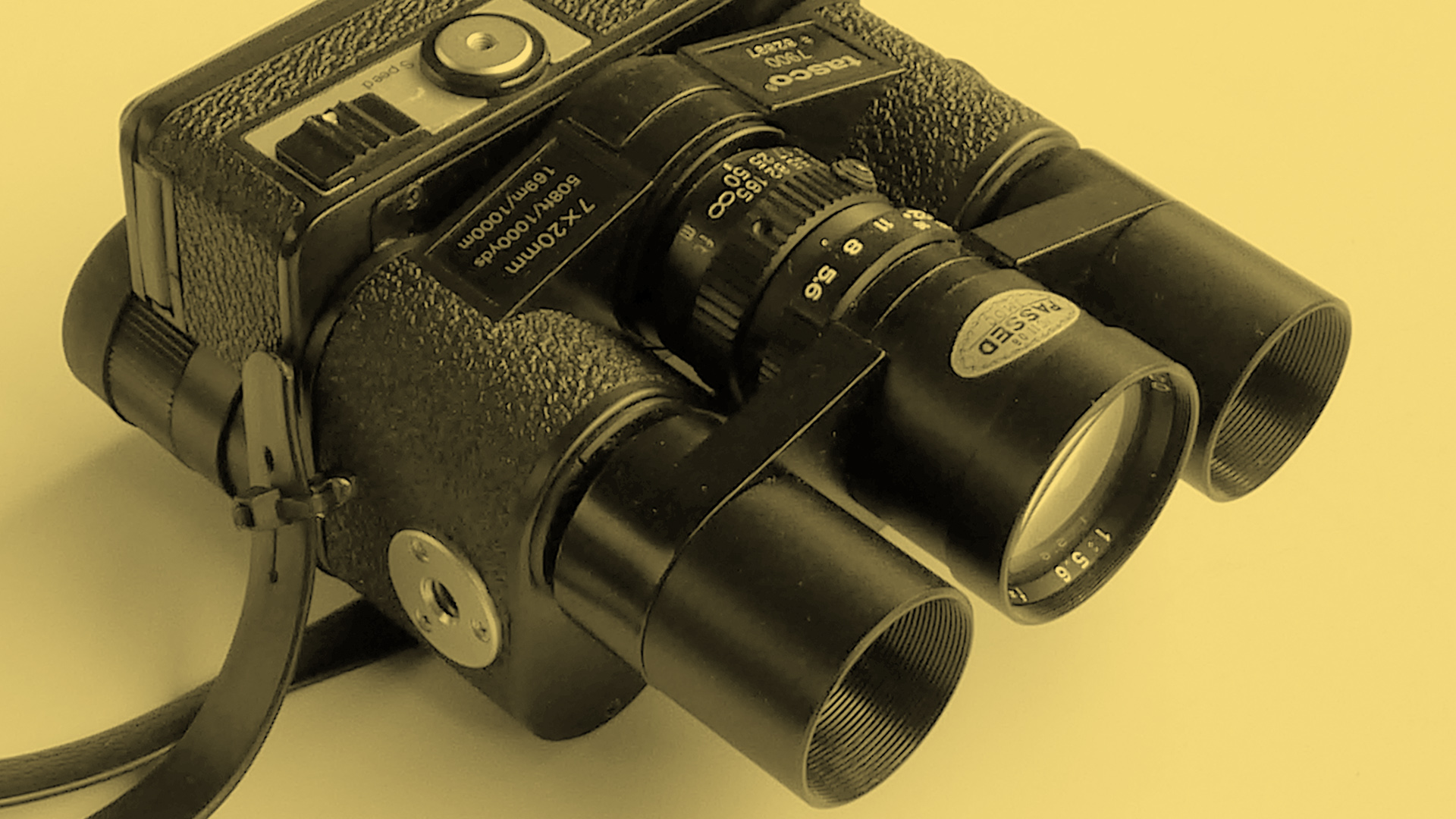
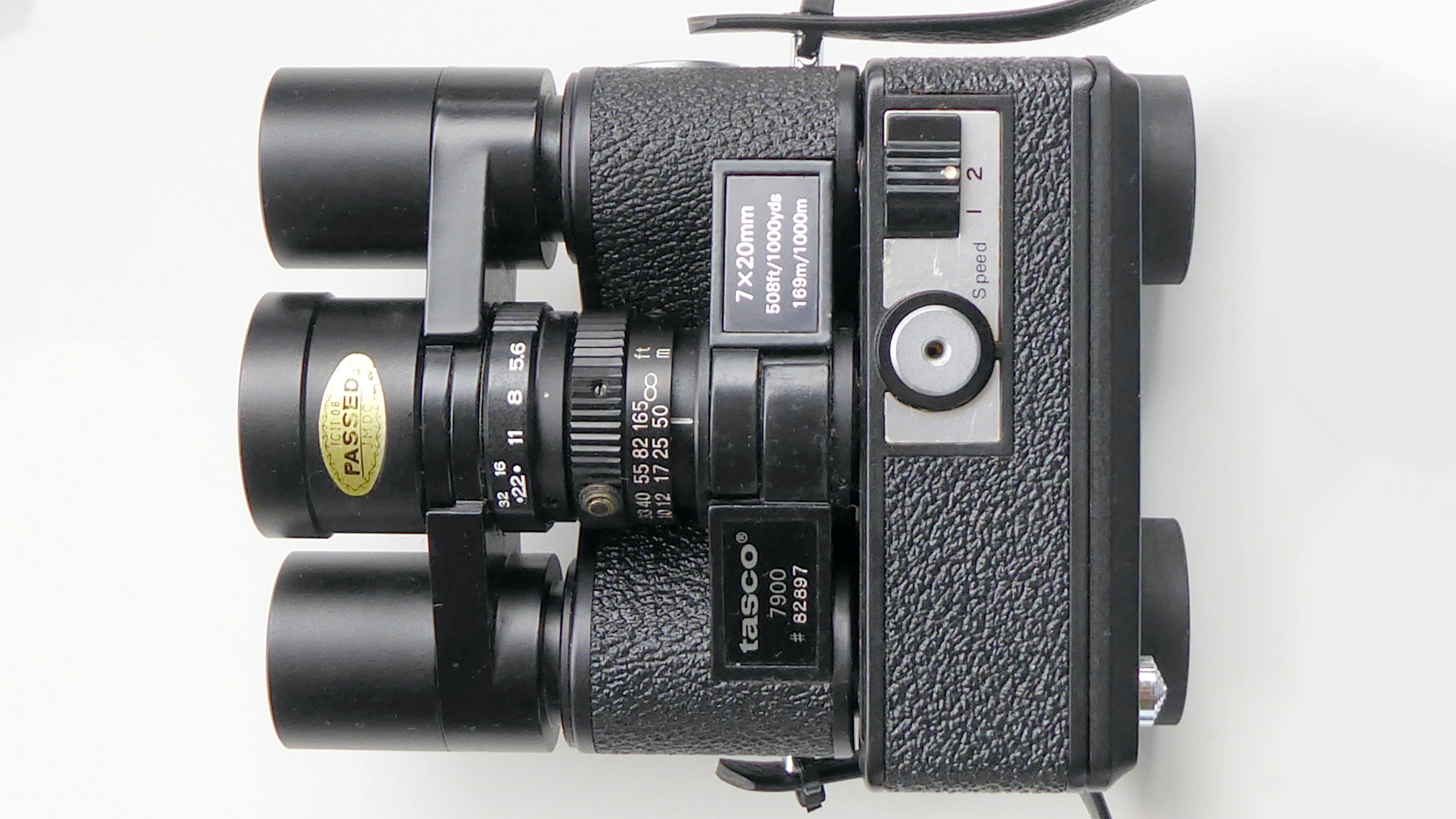
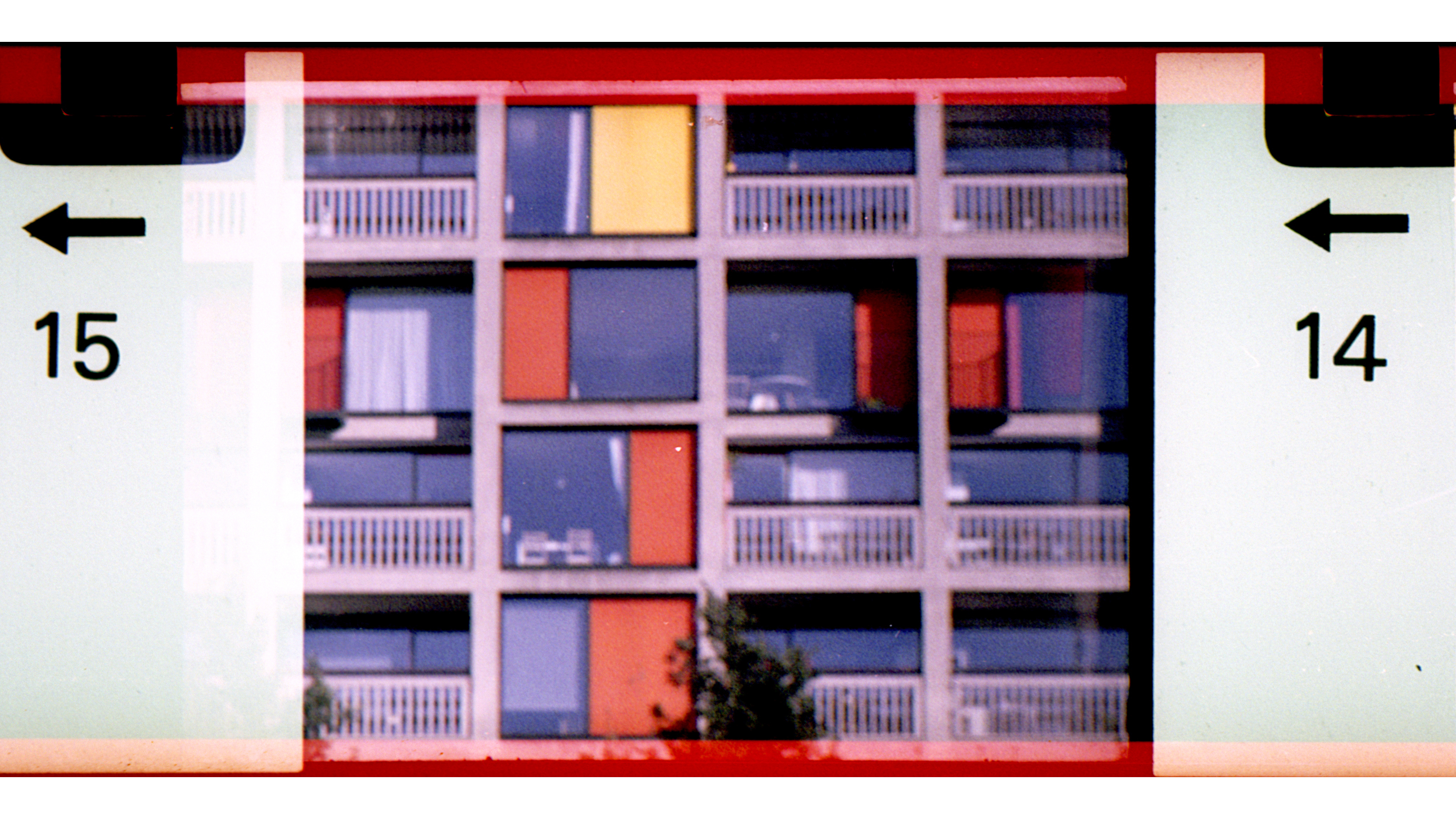
- Bought for £15 (around $21 / AU$28) from eBay 2018
Launched by Tasco in 1977, the Bino/Cam adverts had the catchy tagline “until now you didn't have a choice, you could either look through the camera or look through the binoculars, now you can do both.” It was a claim taken seriously by James Bond in 'For Your Eyes Only' (1981), when he used them to spy on one of his adversaries.
There have been other binocular cameras in the 110 format, but they've tended to be novelty items with poor-quality optics. This one has decent optics both in the binoculars and the camera. The telephoto's focal length is 112mm, which is equivalent to around 225mm on 35mm film. Unlike most 110 cameras, it offers a range of apertures and two shutter speeds.
Sadly, my example doesn't focus properly – I suspect a previous owner attempted to service it and didn't reassemble it properly. This particular piece of kit is long gone, but the Bino/Cam concept lives on, albeit in monocular form, with the recent Canon Powershot Zoom which seems to be aimed at the same market (even if Bond hasn't yet been tempted to pick one up).
The Cold War relic: Krasnogorsk FT2 (1958)
- Bought for £100 (around $139 / AU$189) on eBay in 2011
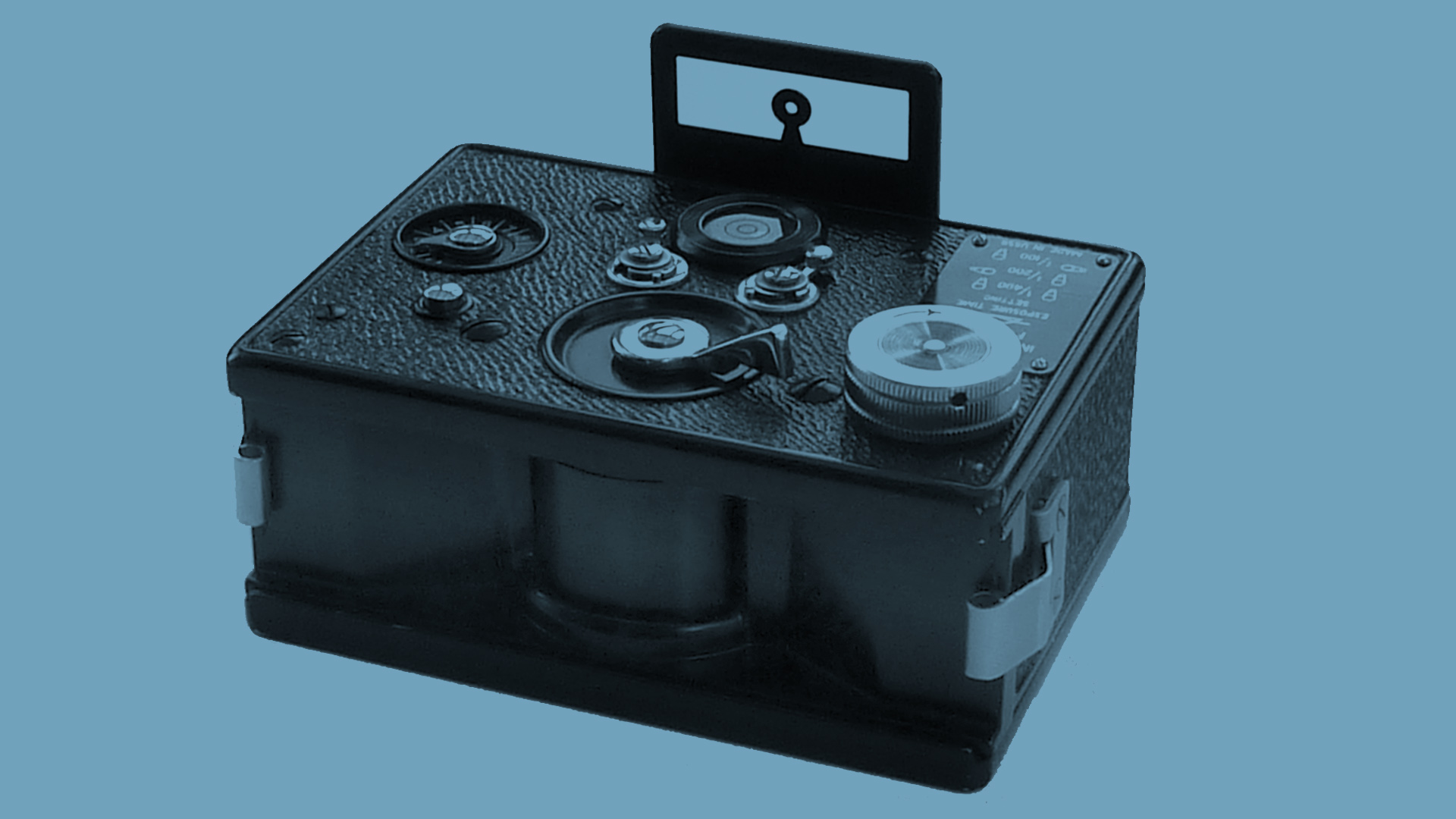
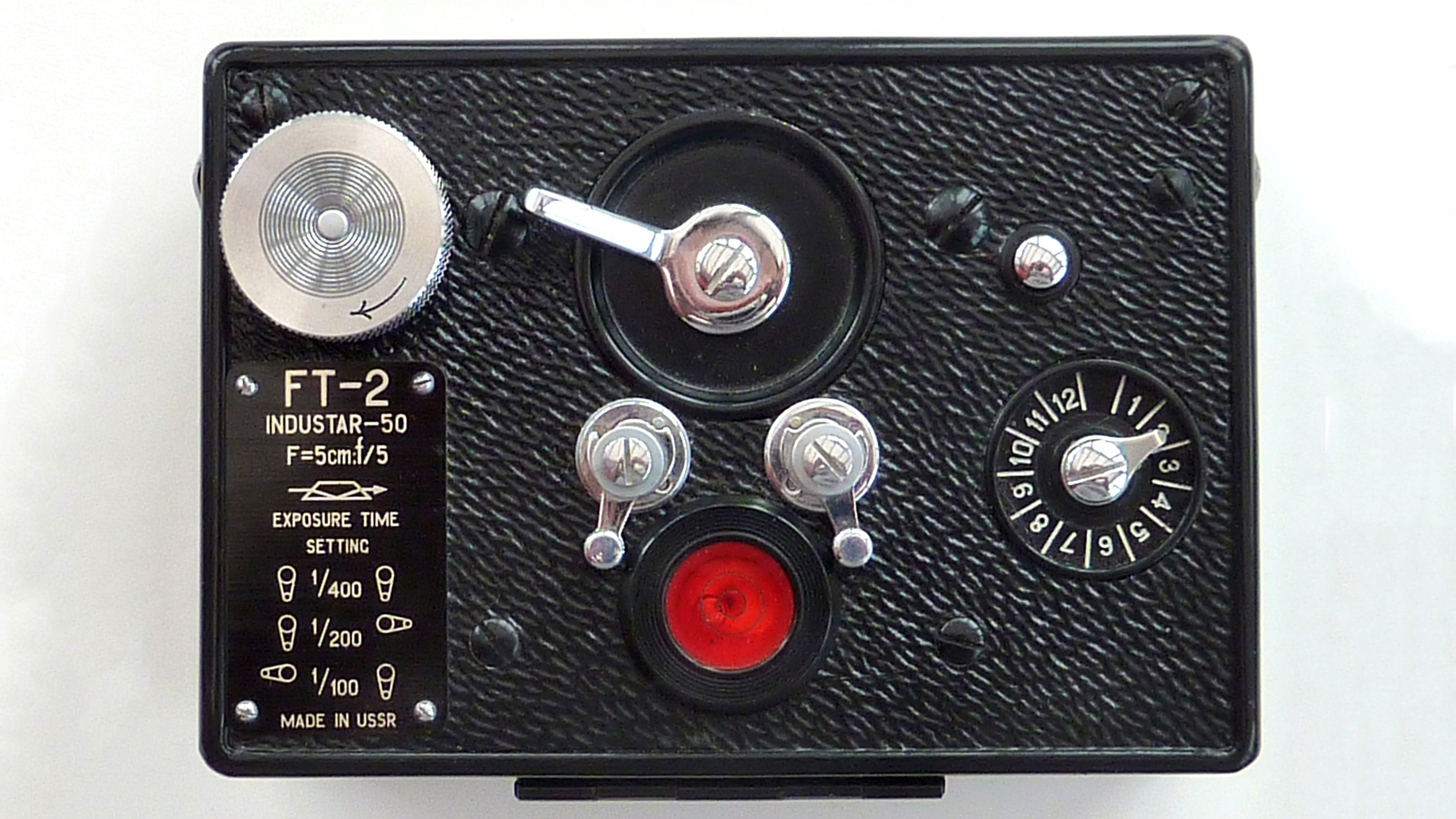
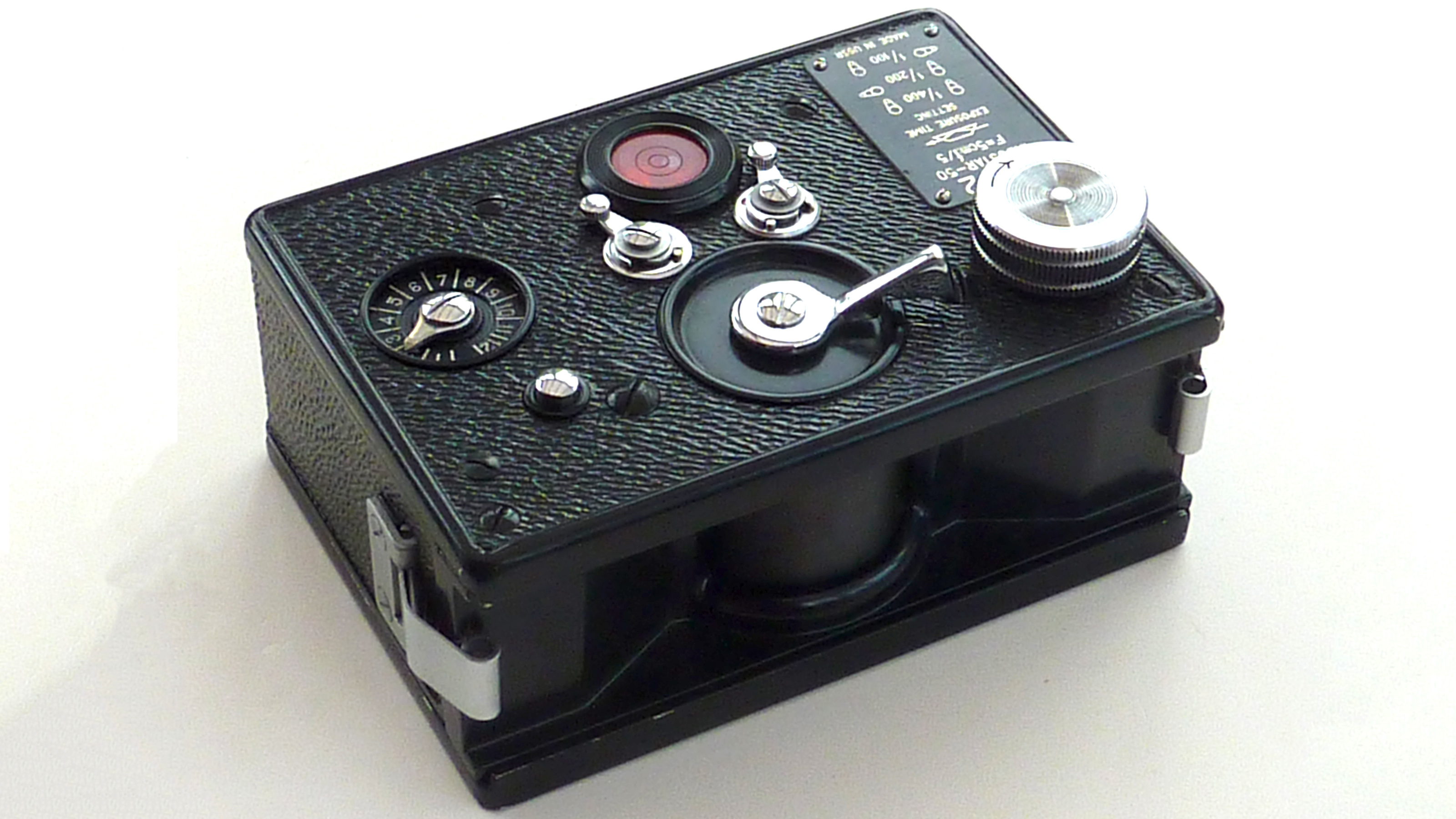
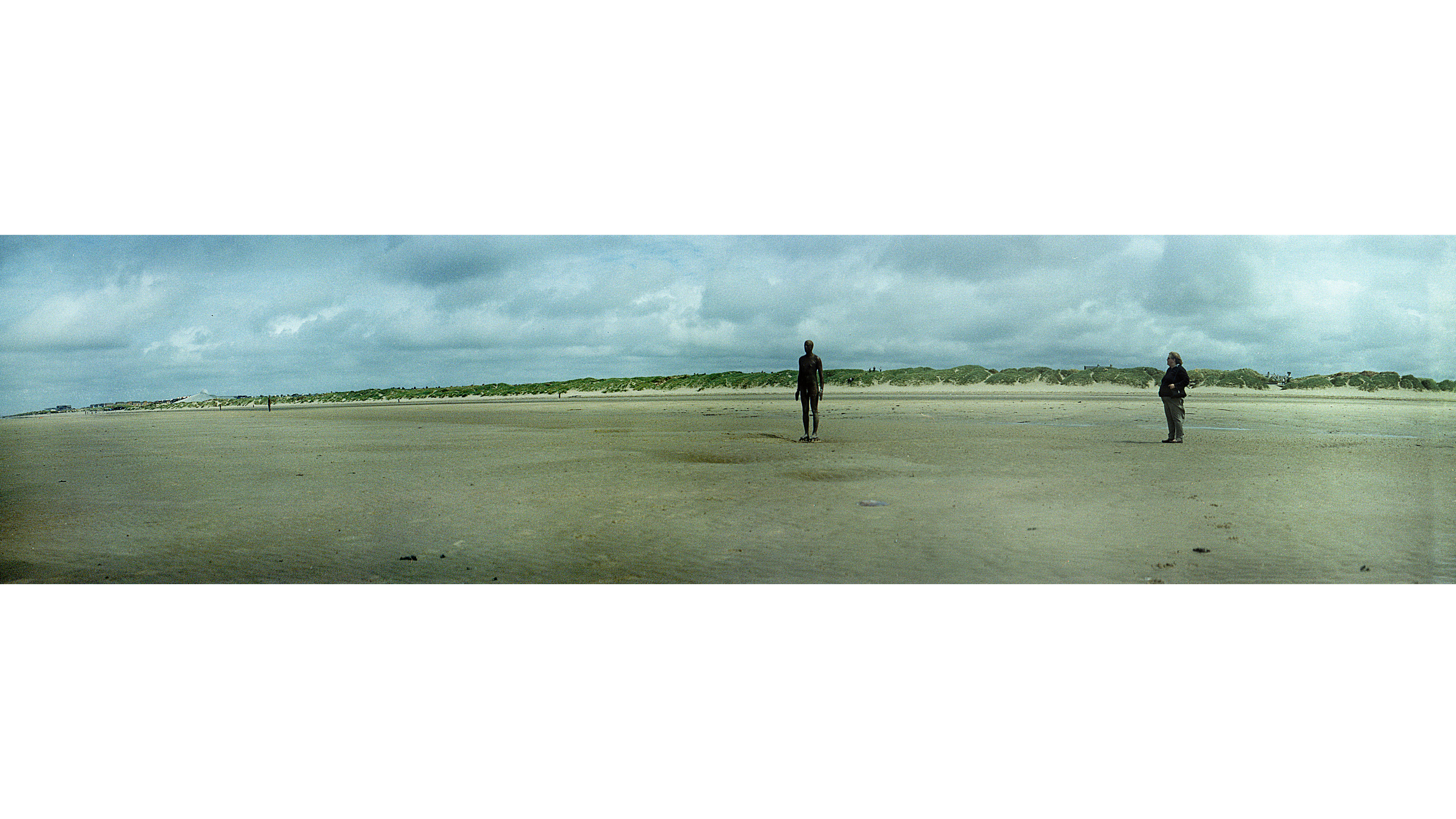
This brick-like metal box with sharp corners could cause serious injury in hand-to-hand combat, so perhaps it's no surprise that its designer was one Fedor Tokarev (the FT in the camera's name), better known as Stalin's favorite weapon designer.
Better known for designing automatic rifles, his camera would also have been used in military settings, taking large group photos of conscripts, the sort of thing that those of us of a certain age associate with old-school photographs. The long, thin negative needed for such shots is achieved by swinging the lens from right to left, taking a sweeping shot of the scene in front of it.
The FT2's negatives are three times the width of a standard 35mm frame, so you only get 12 shots per roll. My group photo taken on Crosby beach is rather sparsely populated, with only two people – and one of those is made of cast iron. The FT2 is awkward to use, but one of its descendants, the Horizon 202, which has a more usable aspect ratio, is a favorite of mine and often accompanies me on holiday.
The Art Deco gem: Purma Special (1937)
- Bought in a car boot sale for a couple of pounds in the 1990s
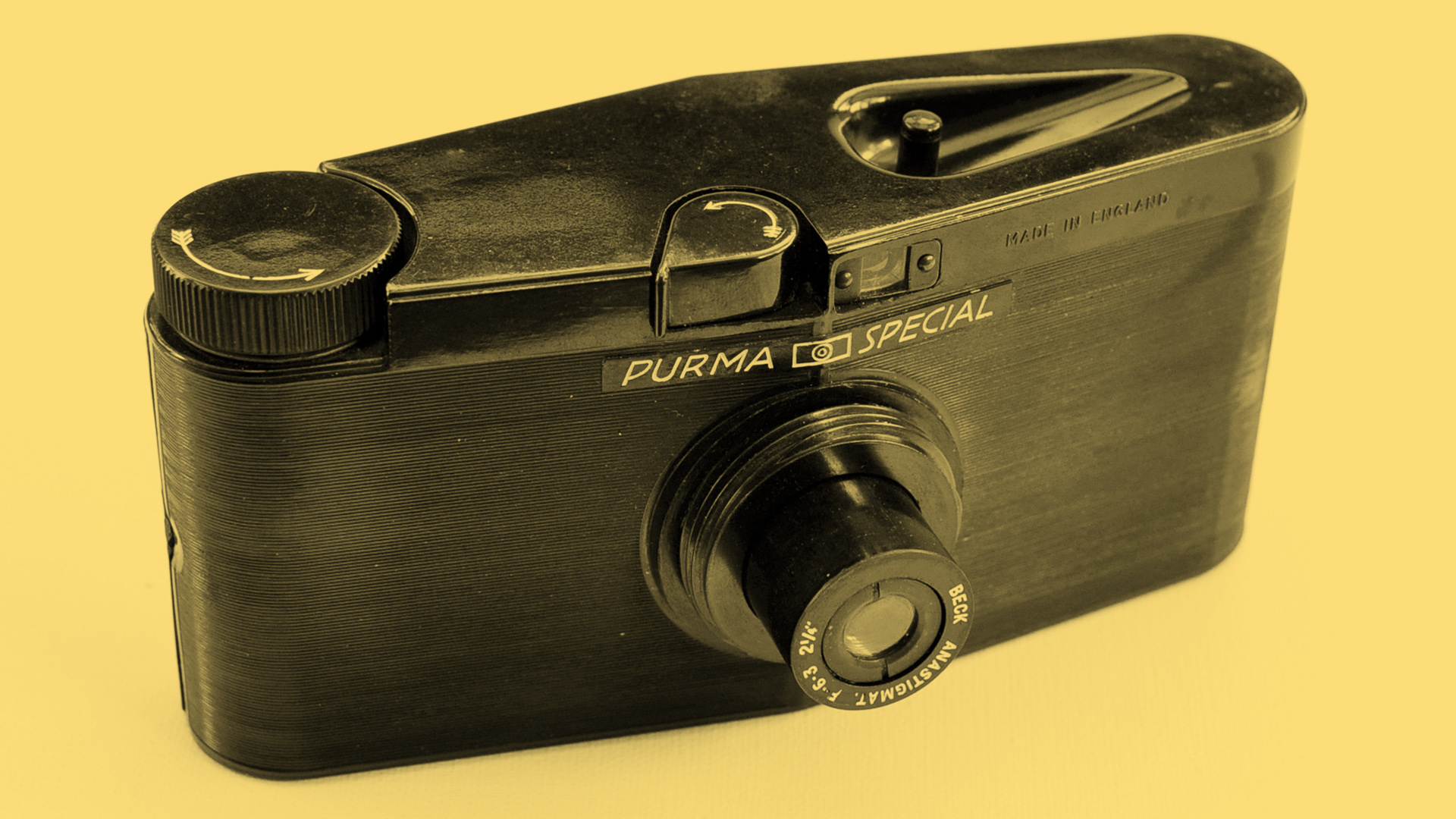
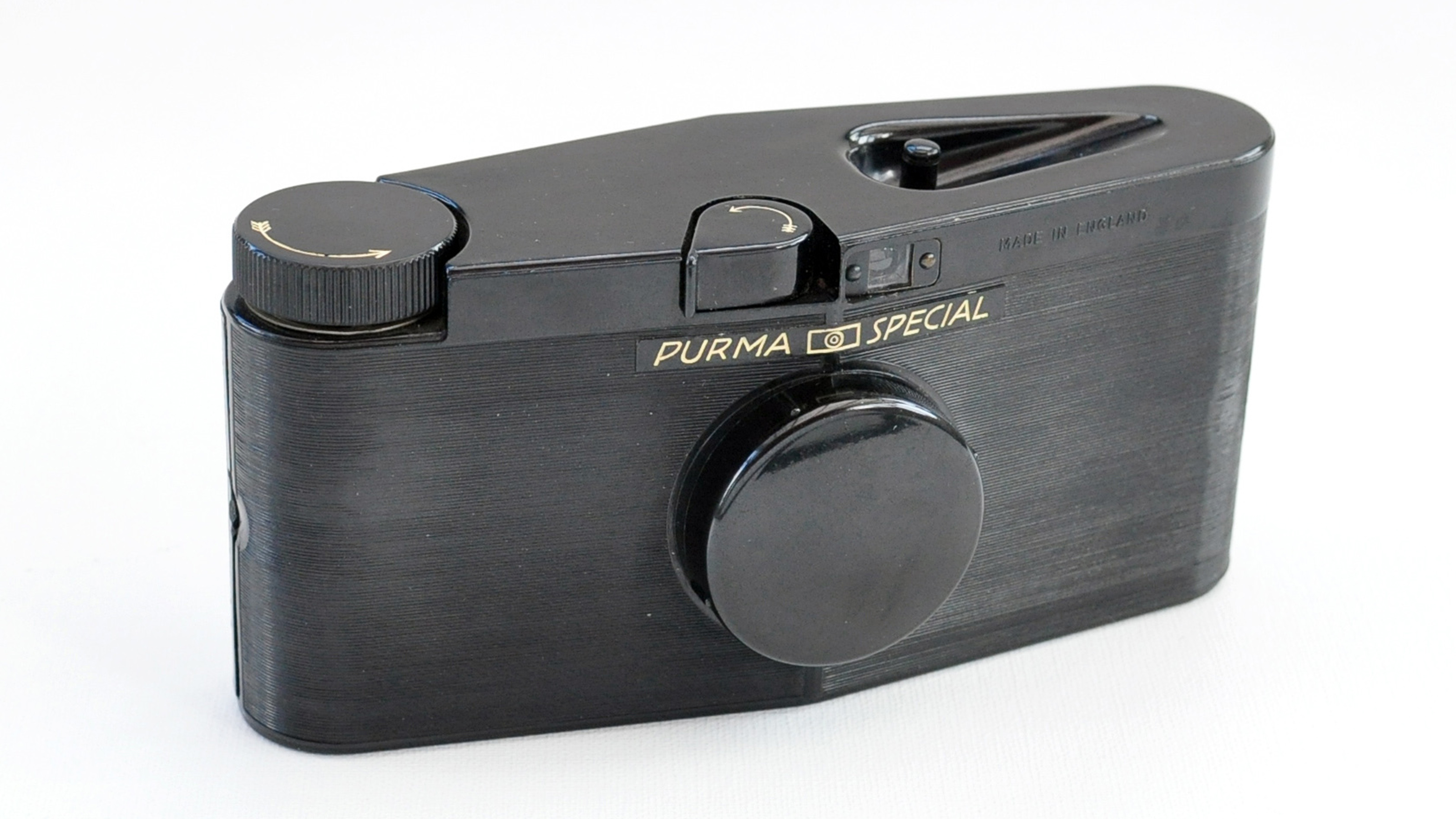
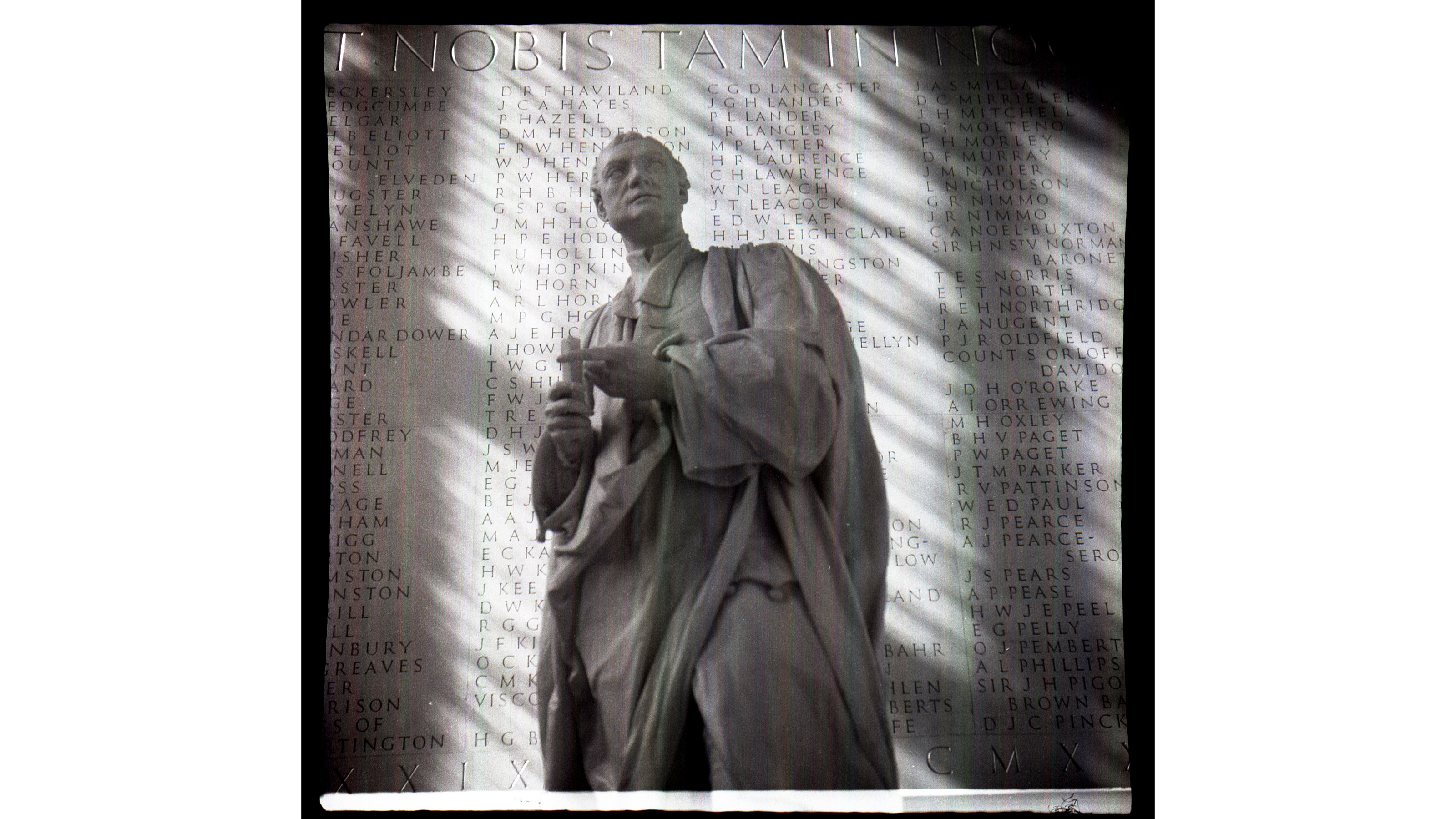
The Purma Special has three shutter speeds, but you'll look in vain for a lever or dial to select them. So how exactly do you change its shutter speed? If you weren't told, you'd probably never guess that it's actually determined by which way up you hold the camera.
Because the camera has a square format negative, it doesn't actually matter how the camera is oriented from a composition standpoint. But a clever, gravity-driven device is weighted so that it falls at a different shutter speed depending on how you hold it. This unique design aside, the Purma Special is a stylish, streamlined Bakelite camera with a distinctly Art Deco look to it.
They were made in large numbers and are easy to come by, but the early plastic gets brittle with age, and many have chips or worse to contend with. When not in use, the spring-loaded lens retracts into the body and is held there by a screw-on lens cap. The lens caps are often missing, so be sure to check if you find one for sale. Seeing as the camera relies on gravity to operate, I thought a sculpture of Sir Isaac Newton would make a fitting subject in the photo above.
Quirky and quickfire: Yashica Rapide (1961)
- Bought for £50 (around $69 / AU$94) on eBay in 2012
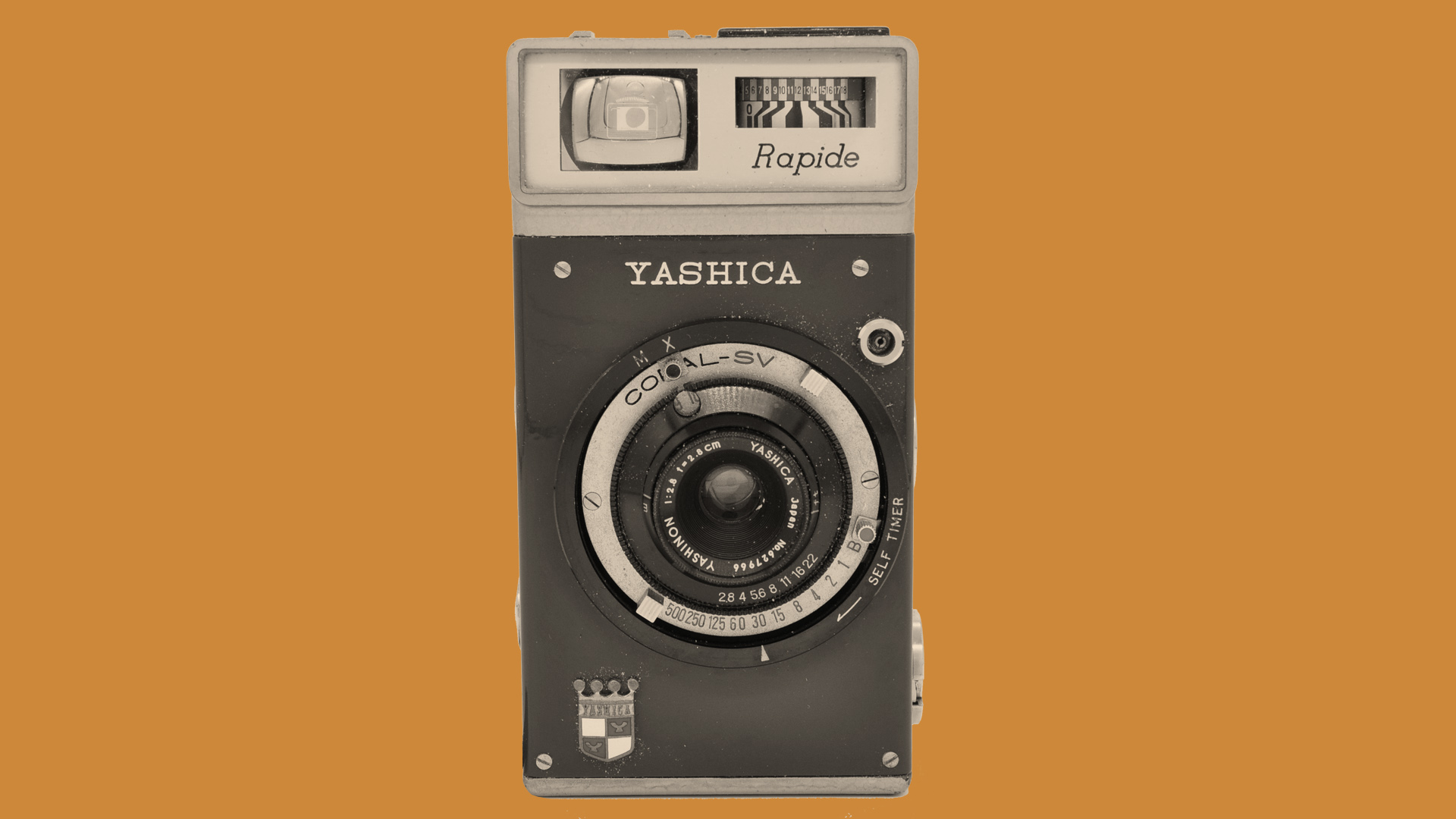
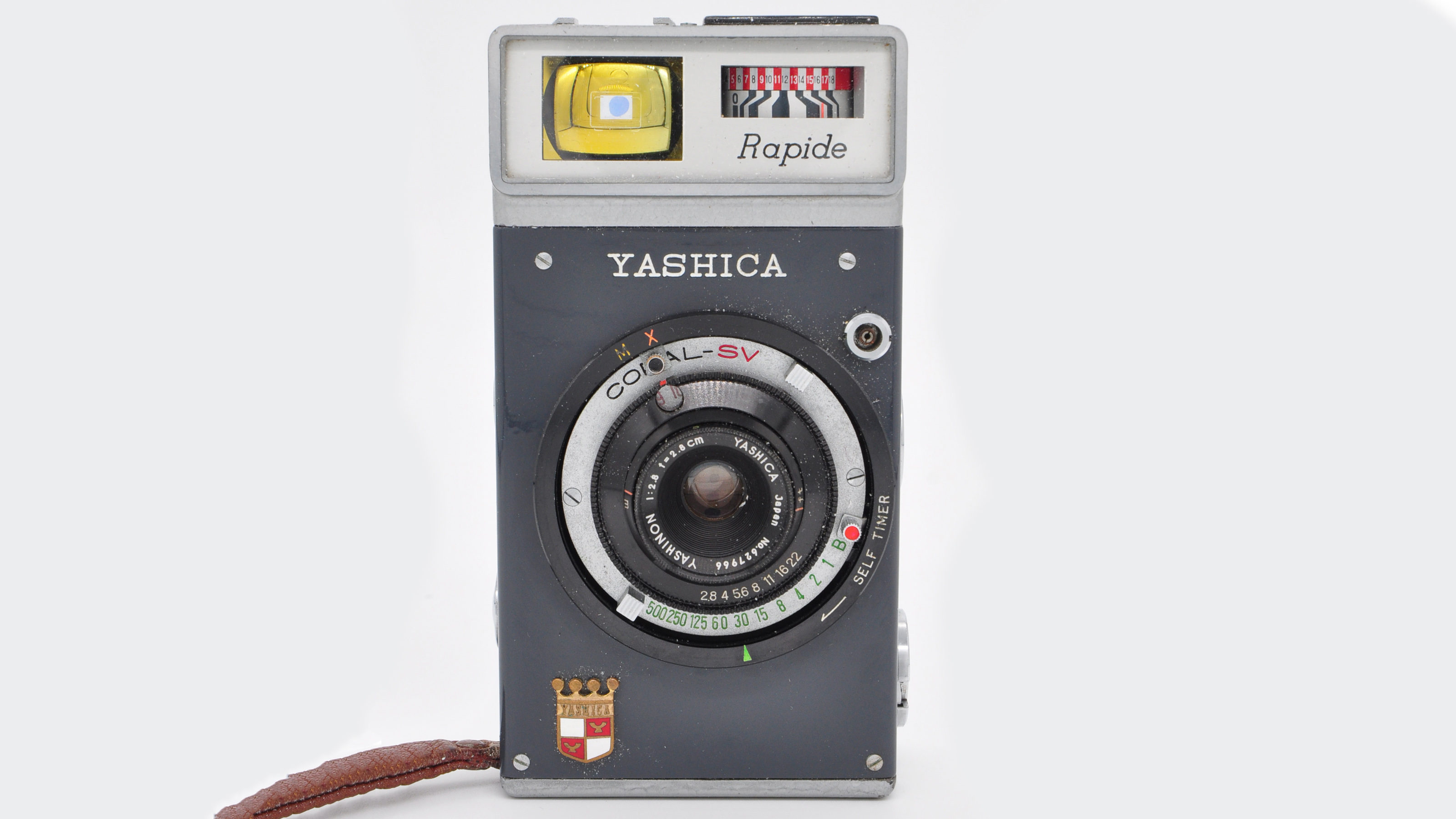
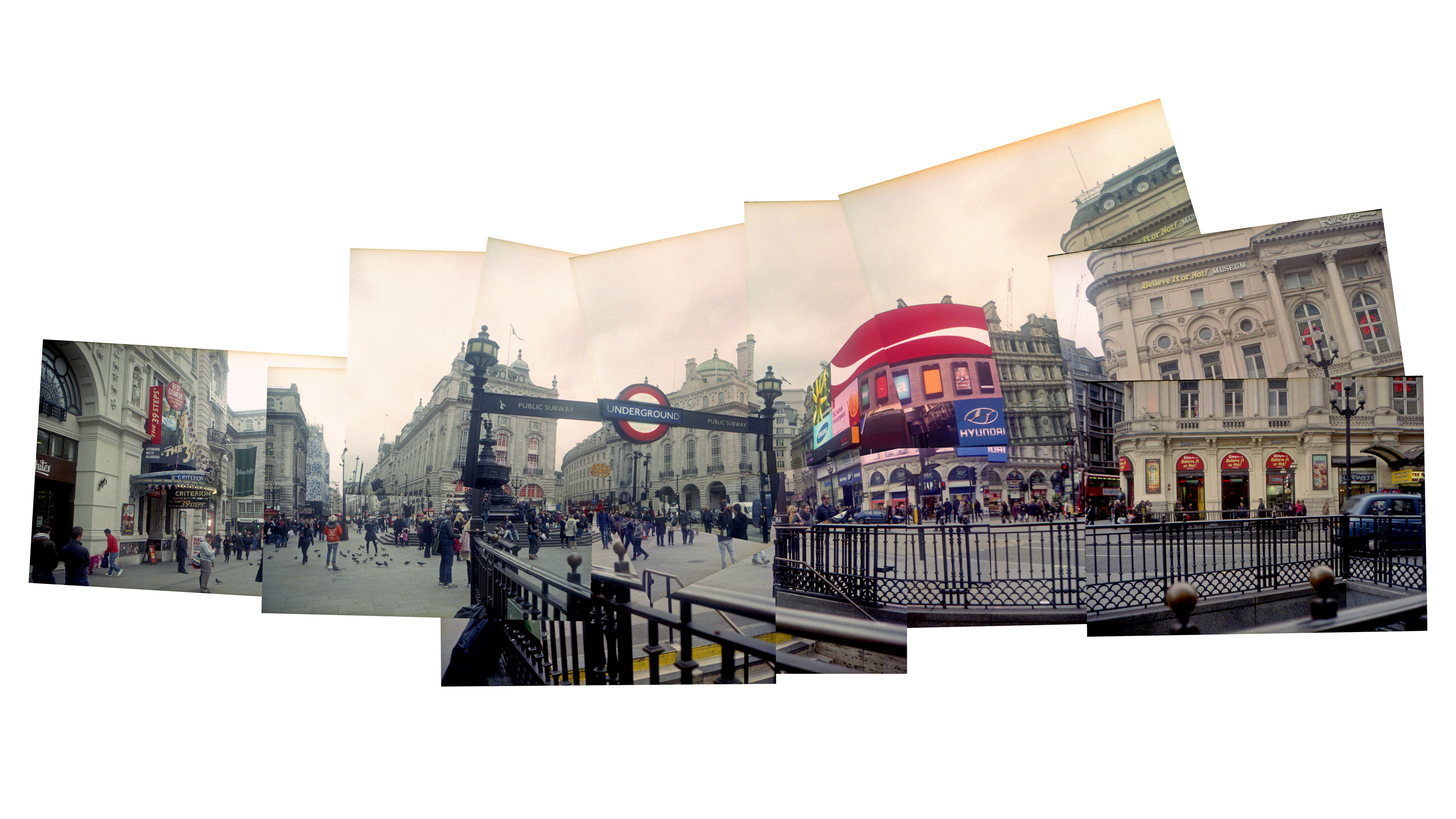
The Yashica Rapide doesn't look like your average camera at all – in fact, it could easily be mistaken for a cine camera. About the size of a large smartphone, if somewhat thicker, the Rapide's name refers to the rapid wind-on and shutter-cocking mechanism, which is achieved by tugging sharply on a leather tab. With practice, you can take an exposure every second or so should the need arise.
I quite like to make David Hockney-style 'joiner' photographs, where several pictures are taken with the camera pointing in different directions, with this camera. The resulting prints assemble into a collage, with the overlaps and incongruities providing added visual interest.
The Rapide lived up to its name in the photo above, allowing me to get fourteen shots done in under a minute, having just emerged from the tube at London's Piccadilly Circus. Of course, it took considerably longer than a minute to put them all together in Photoshop Elements, and reminded me that just because you start off with an analogue camera, doesn't mean you can entirely escape the digital drudgery.
The Japanese Warrior: Kyocera Samurai (1987)
- Bought for £10 (around $14 / AU$19) on eBay in 2012
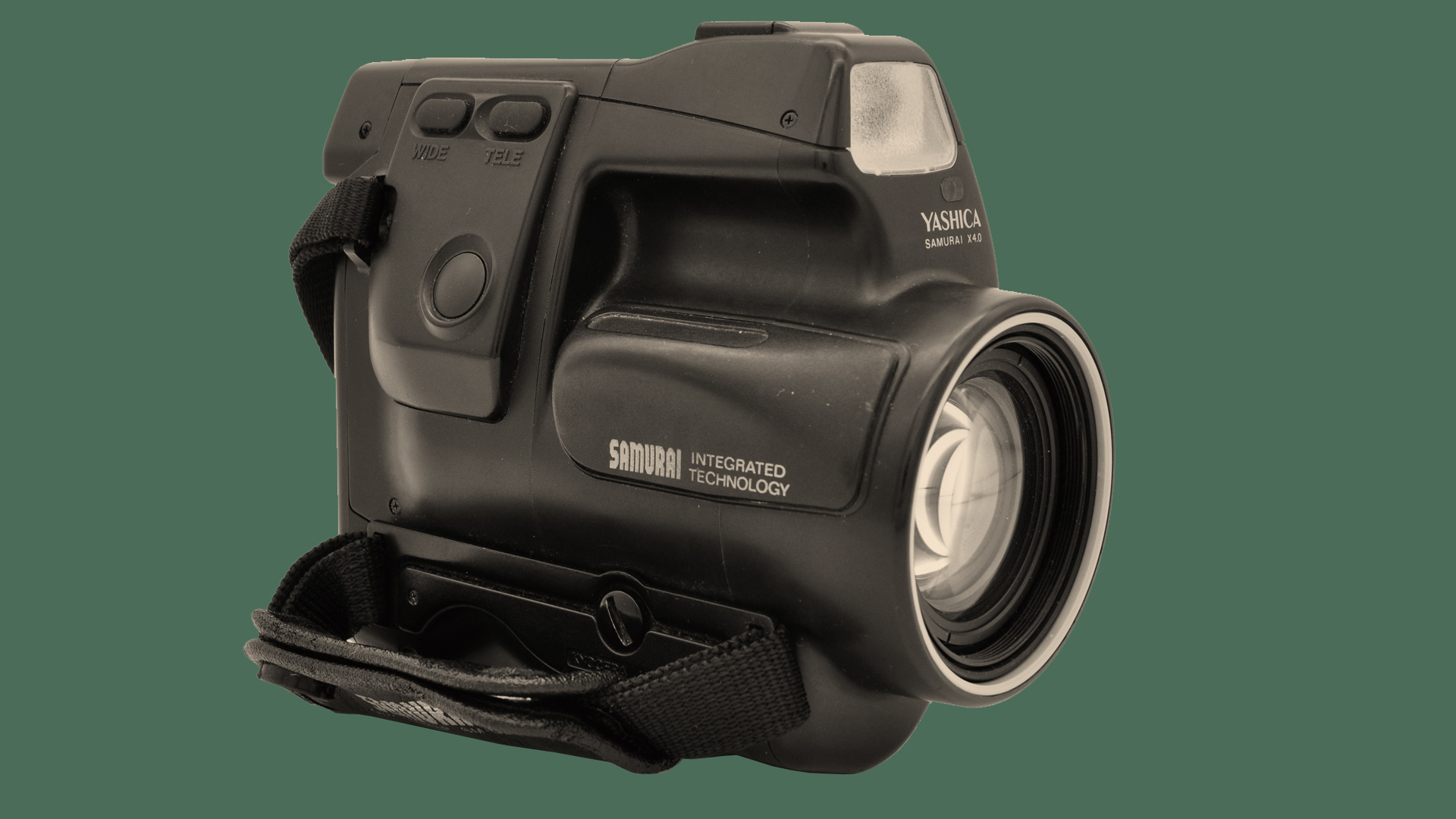
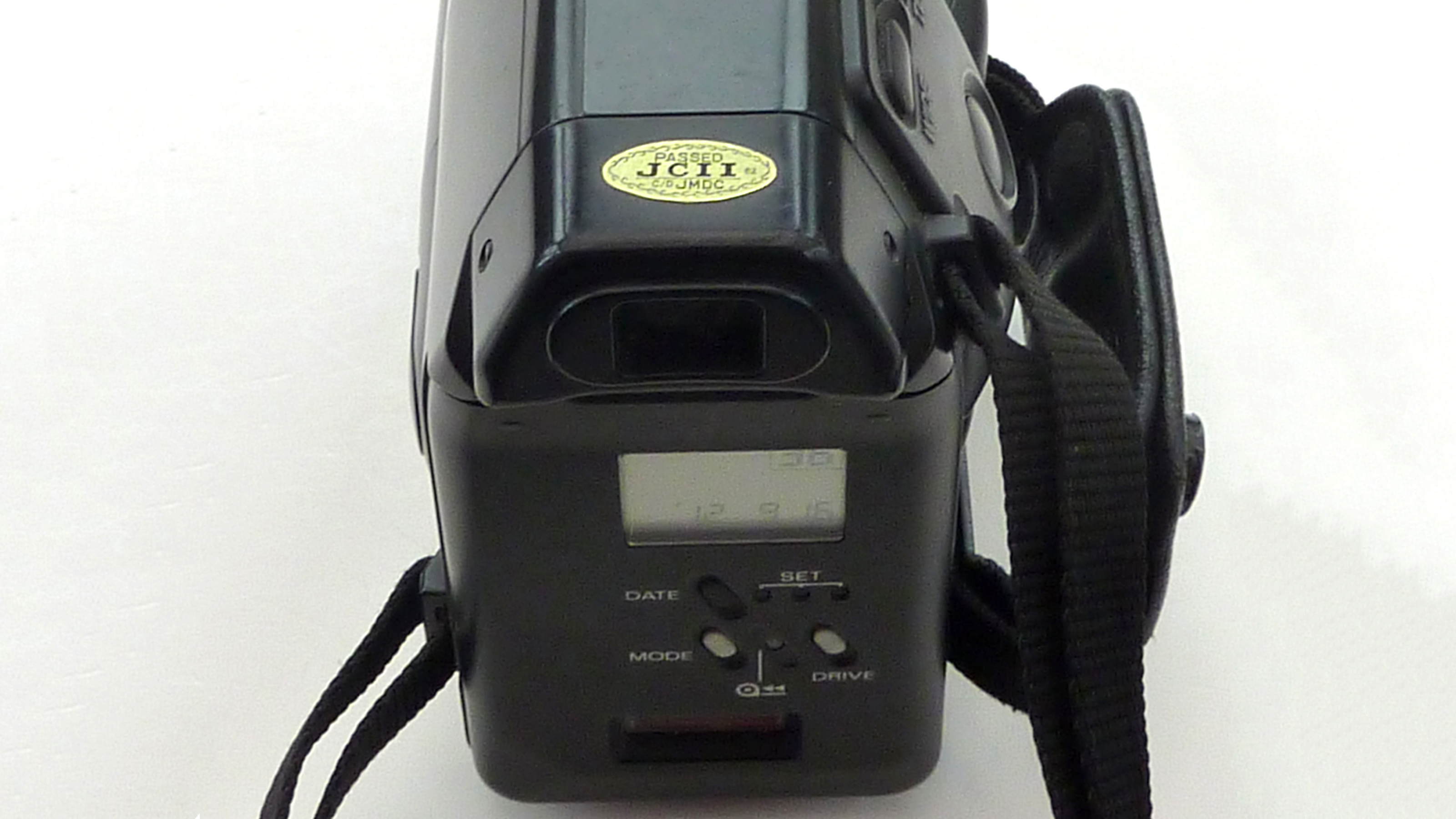
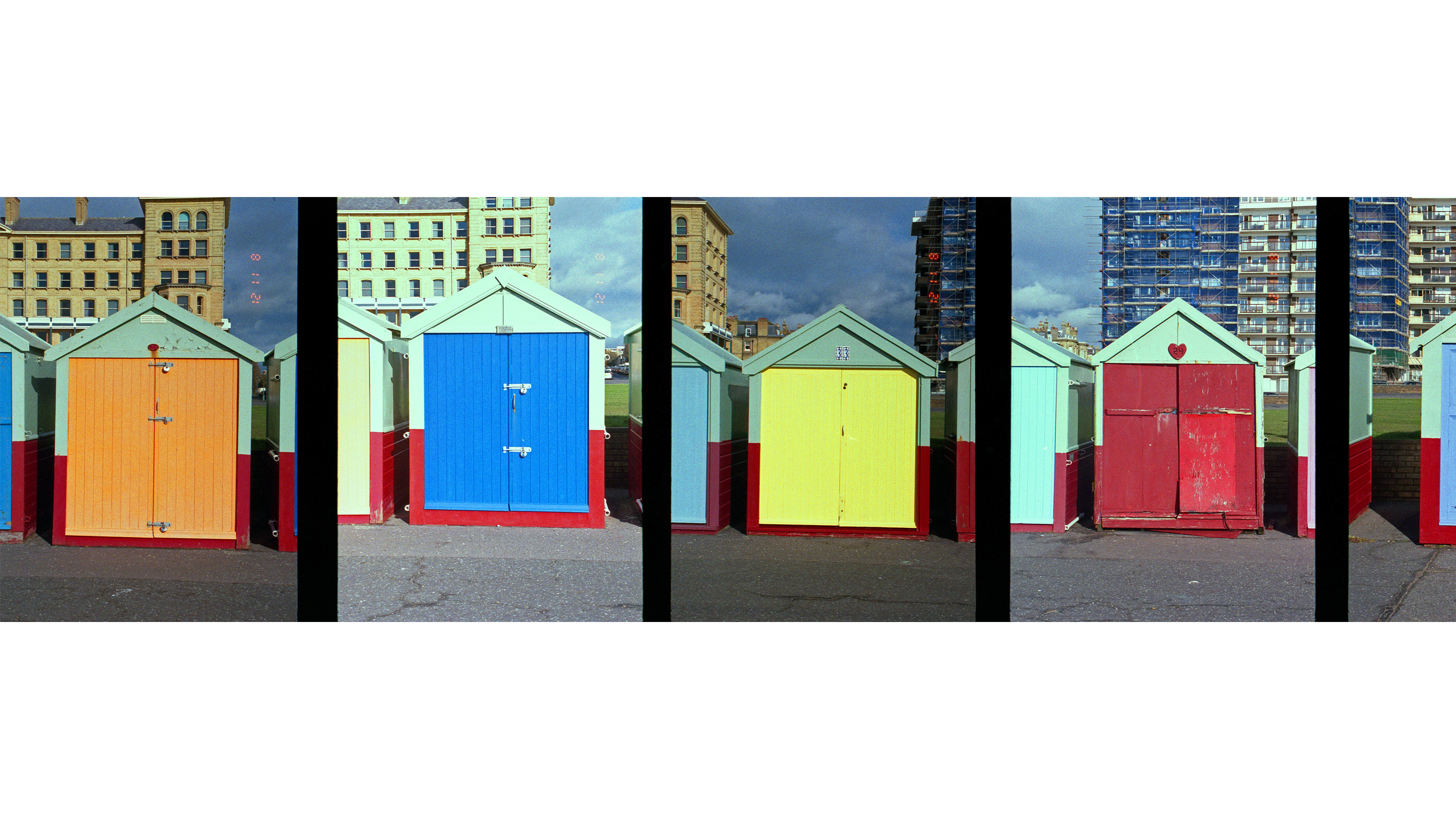
The Kyocera Samurai might look like a video camera from the 1990s, but looks can be deceptive. It even handles like an old camcorder, being gripped snugly with your right hand so you can access the main controls with your fingertips, but the Samurai is actually a 35mm SLR that makes half-frame negatives.
It's fully automatic, but the specs are pretty comprehensive, with a 25mm-75mm auto-focus zoom lens, and shutter speeds that go from 1/500th sec right down to three seconds, all controlled by a TTL (Through The Lens) metering system. Those half-frame negatives mean it can shoot up to 72 exposures on a 36-exposure cassette.
It certainly sounds like an SLR, with a satisfying mirror slap each time an exposure is made. In burst mode, which is three frames per second, it can sound very indiscreet, positively paparazzi. Still, with 72 shots to play with, it's an ideal camera to make little series of images, such as these seven beach huts in Hove near Brighton in the UK.
The pocket full-framer: Durst Duca (1947)
- Bought for £15 (around $21 / AU$28) from eBay in 2011
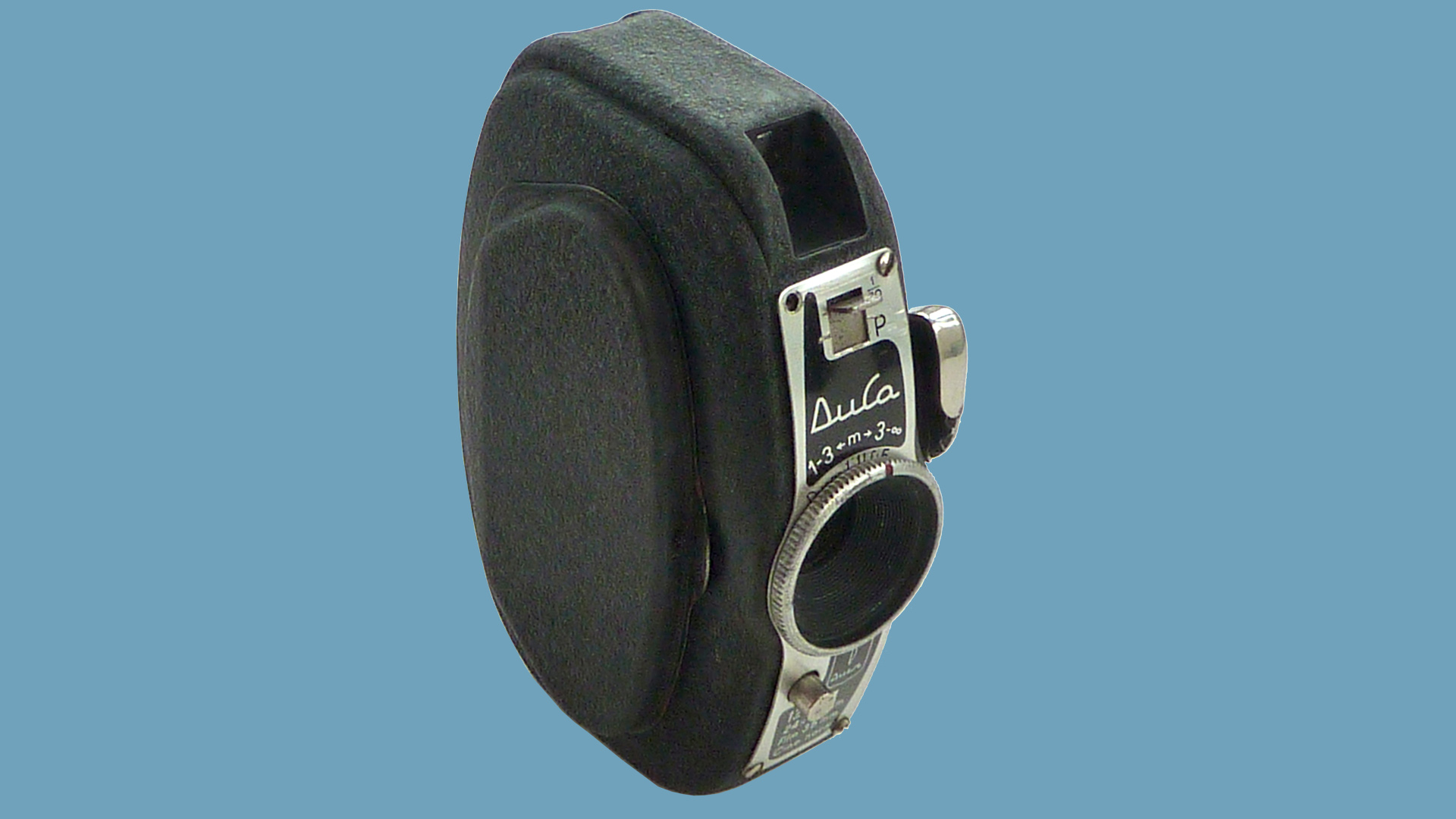
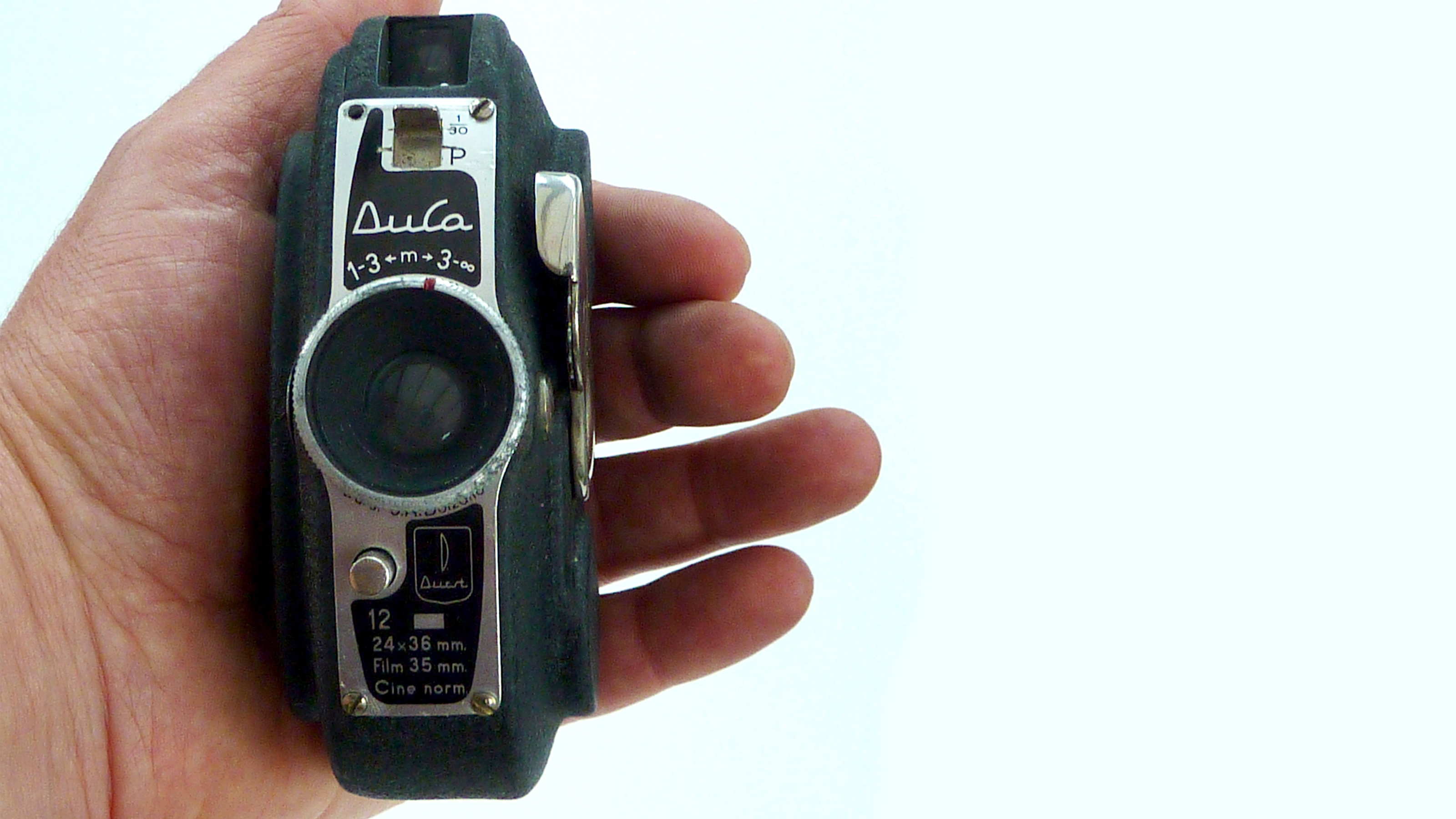
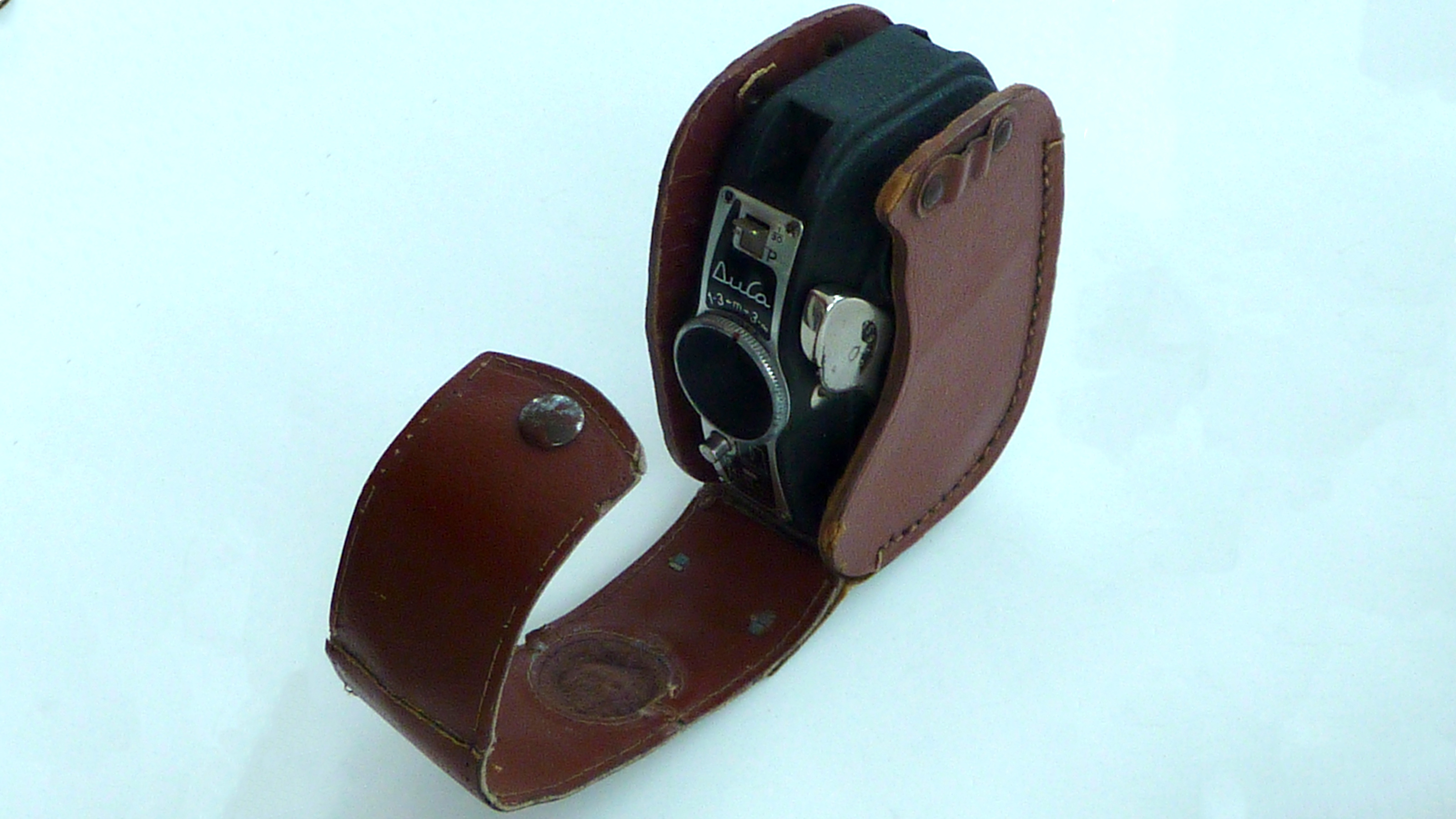
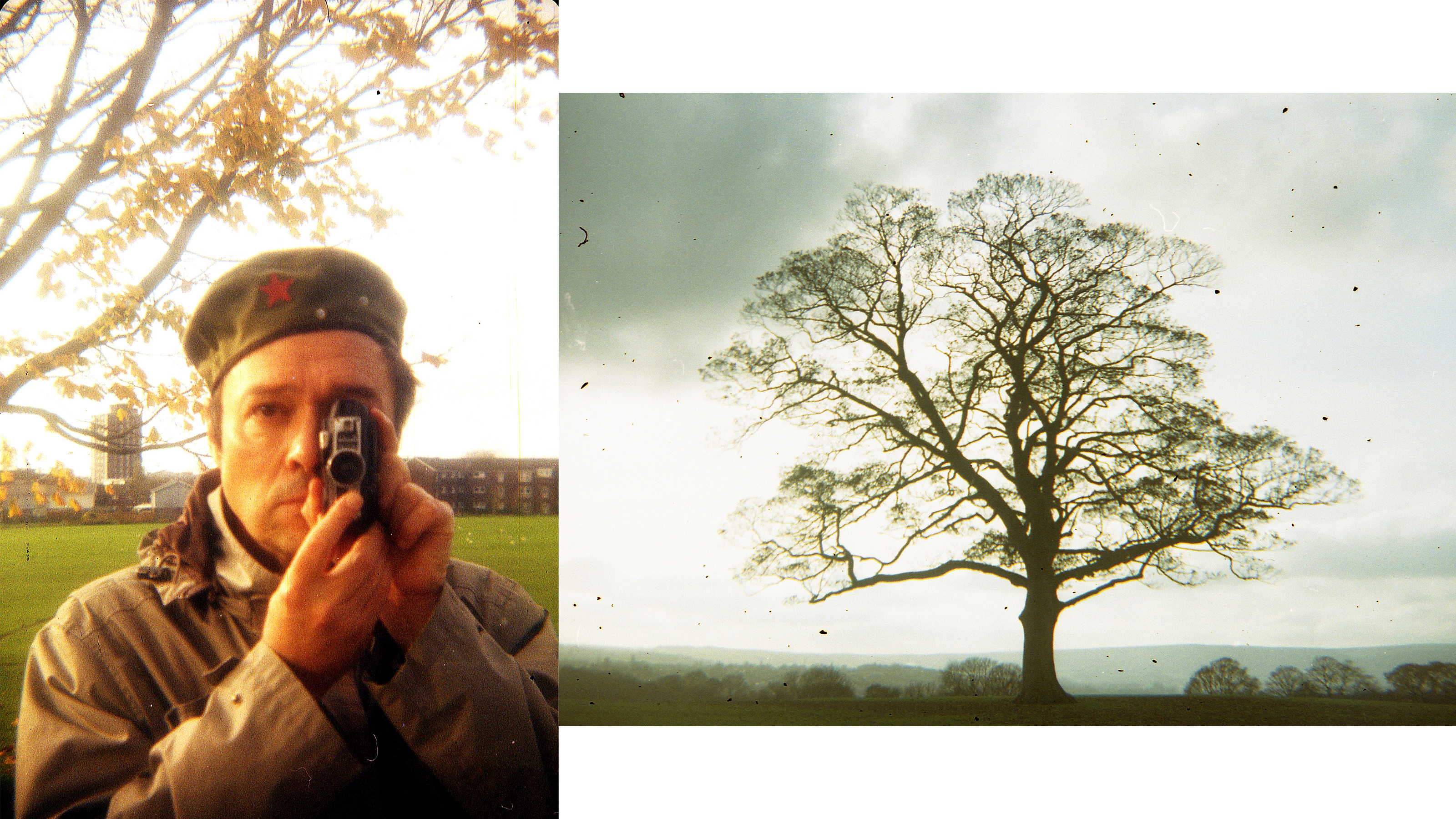
The Italian company Durst were probably best known for their enlargers and other darkroom equipment, but they did make a handful of cameras, too. The palm-sized Duca was launched in 1947, and was in production for around five years.
It uses standard 35mm film, but this is loaded into the 'Rapid' spool-free cartridges. These have the advantage of being smaller than a standard cassette, but this is at the expense of only being able to handle short lengths of film – in this case 12 exposures. The upright design of the Duca makes it look more like an 8mm cine camera than a stills camera, and when it's in its tight fitting leather case, I think most people would assume that's what it was.
A lever on the side of the camera advances the film and cocks the shutter, and also incorporates a frame counter. The shutter release is on the front, below the lens, and ergonomically this layout would allow for taking photos in quick succession – something that's unlikely to be taken advantage of, given the limited number of exposures in the cartridge.
The sea monster: Nemrod Siluro (1960)
- Bought for £40 (around $55 / AU$76) on eBay in 2012
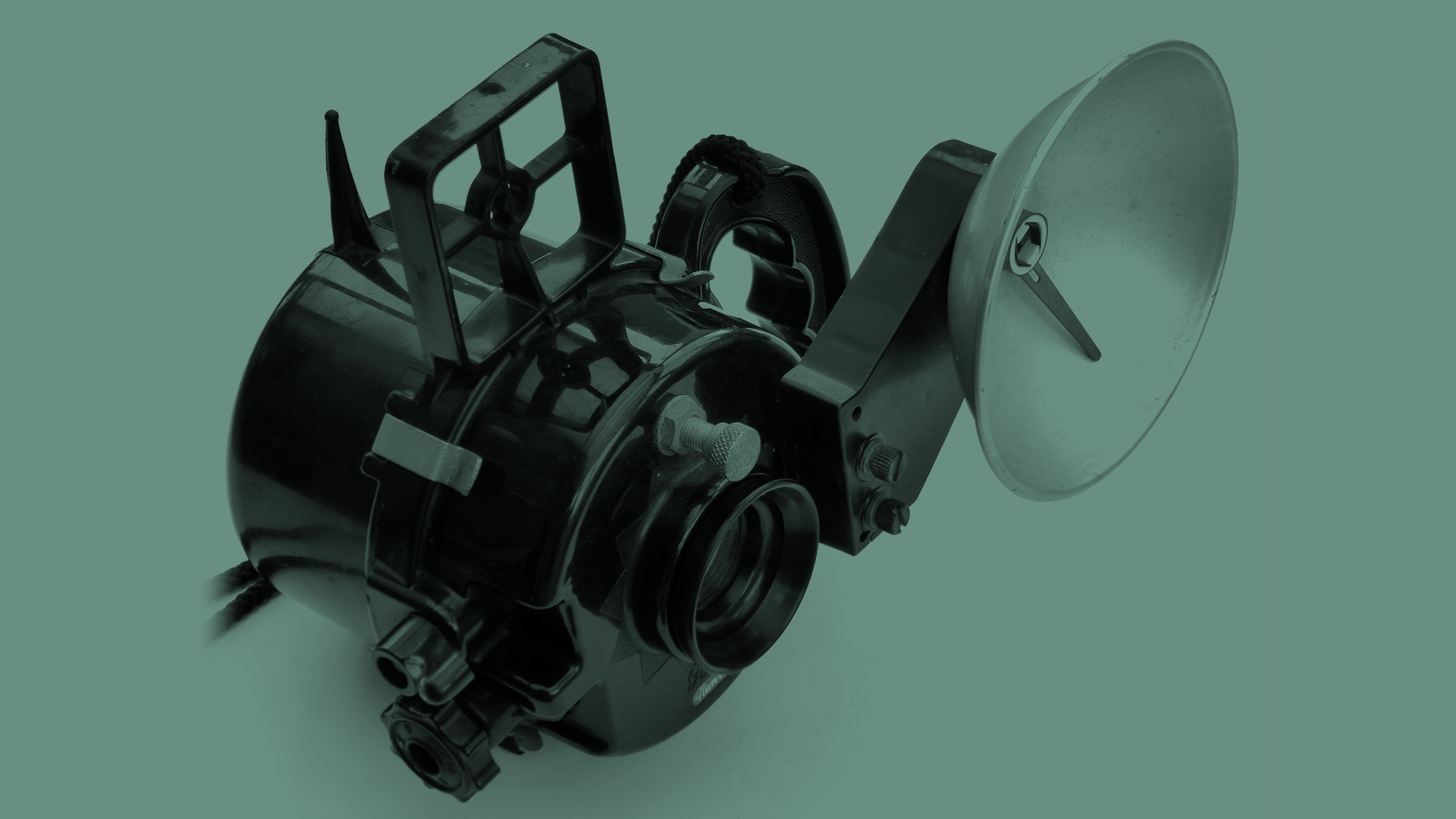
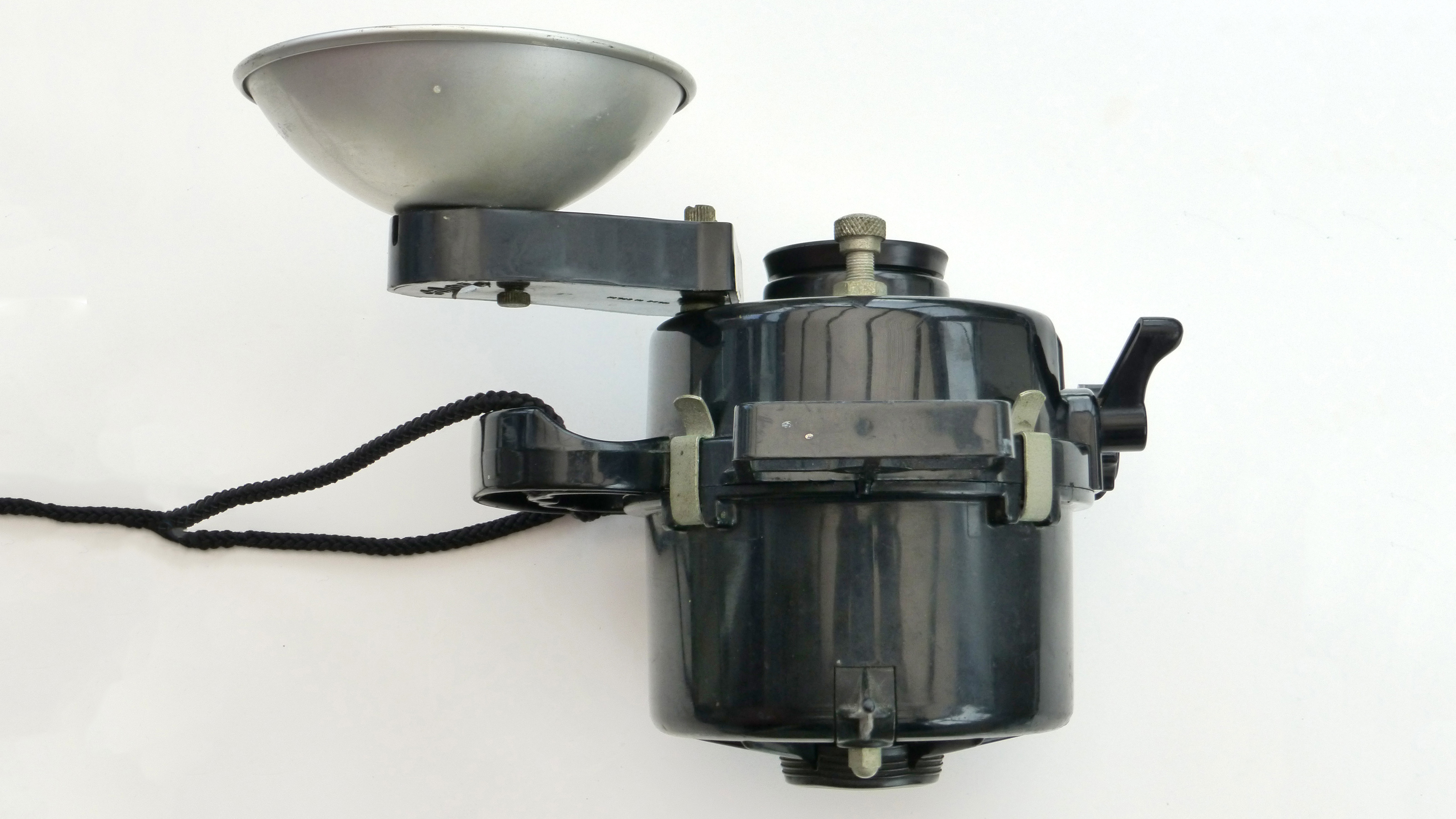
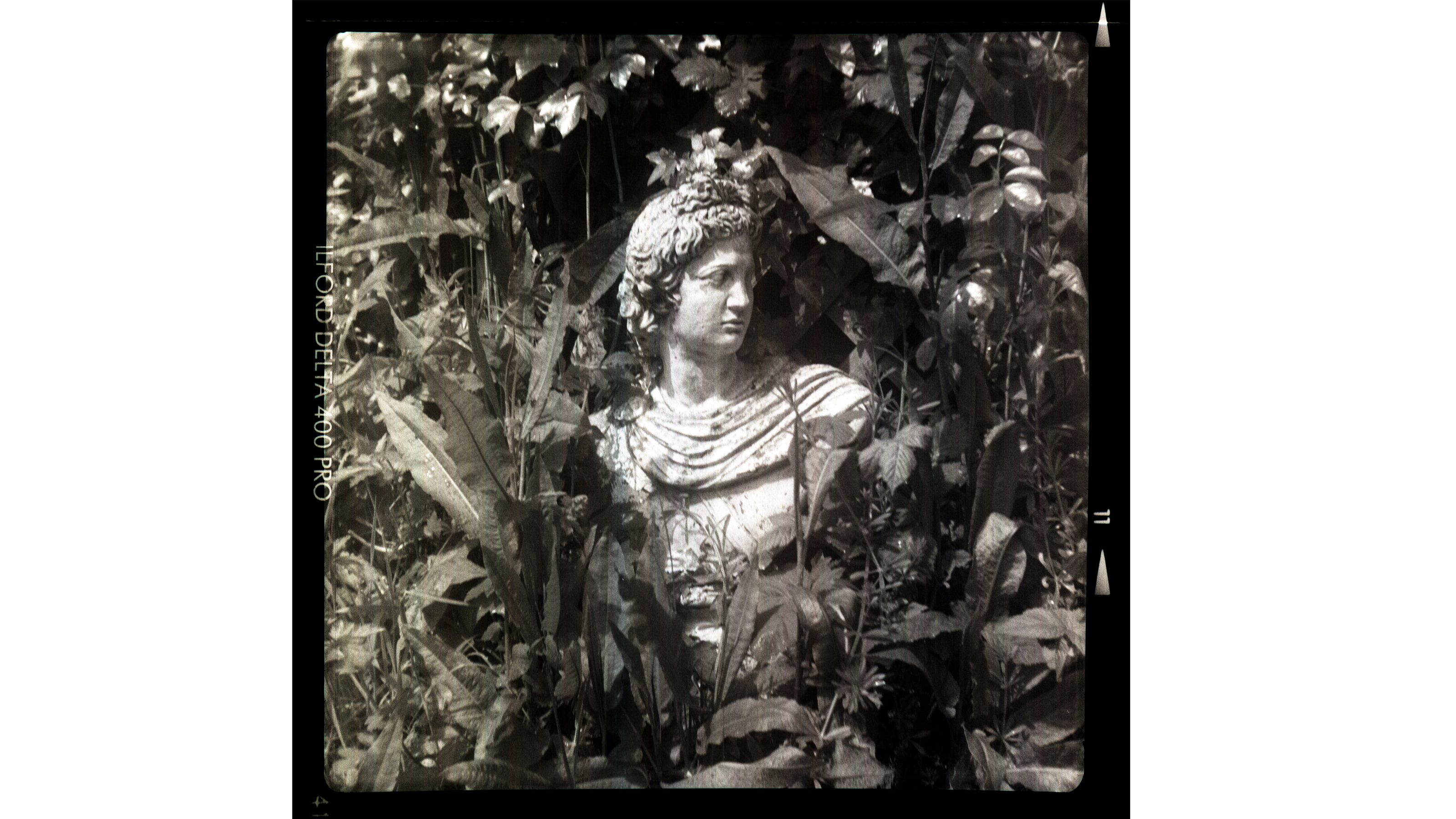
This underwater camera was made by Nemrod Metzeler of Barcelona, a manufacturer of diving and spear-fishing equipment, which also dipped its toe into the photographic market with this, its one-and-only camera. Despite the rudimentary nature of the photographic part of the Siluro, this was a niche product and commanded a premium price in the early 1960s when it was made.
For a plastic camera, it's remarkably heavy, and this is because it contains lead weights to give it neutral buoyancy. It also houses a battery and a large capacitor to power the single-use flashbulbs needed to provide sufficient light in deep water.
Inside the underwater casing is the simplest possible box camera, with a single shutter speed, and no adjustments for focusing or aperture. The Siluro claimed to be usable down to 40m – and behind the large, knurled metal knob on the front there's a valve to let you pressurize the interior with a bicycle pump prior to diving. I was having none of that and confined myself to a selfie in my bathroom mirror – that's about as close to water that this camera's going to get.
- These are the best cameras in the world
from TechRadar - All the latest technology news https://ift.tt/3xPdEtR